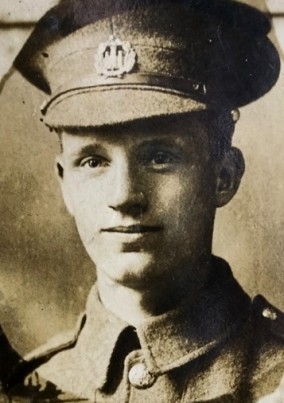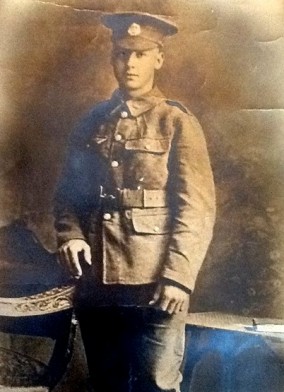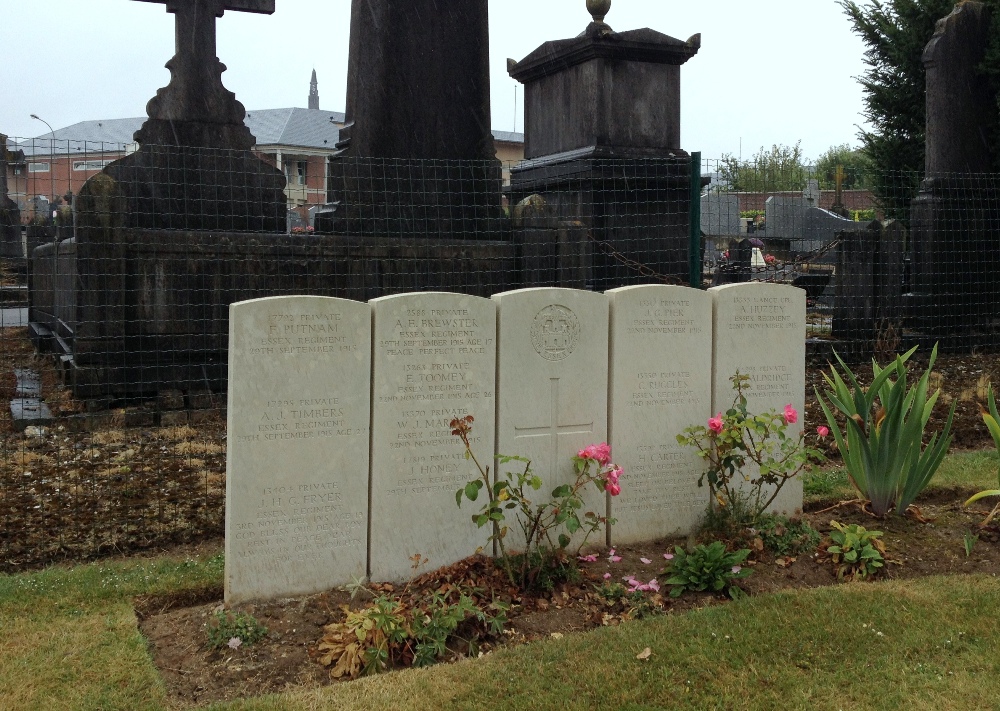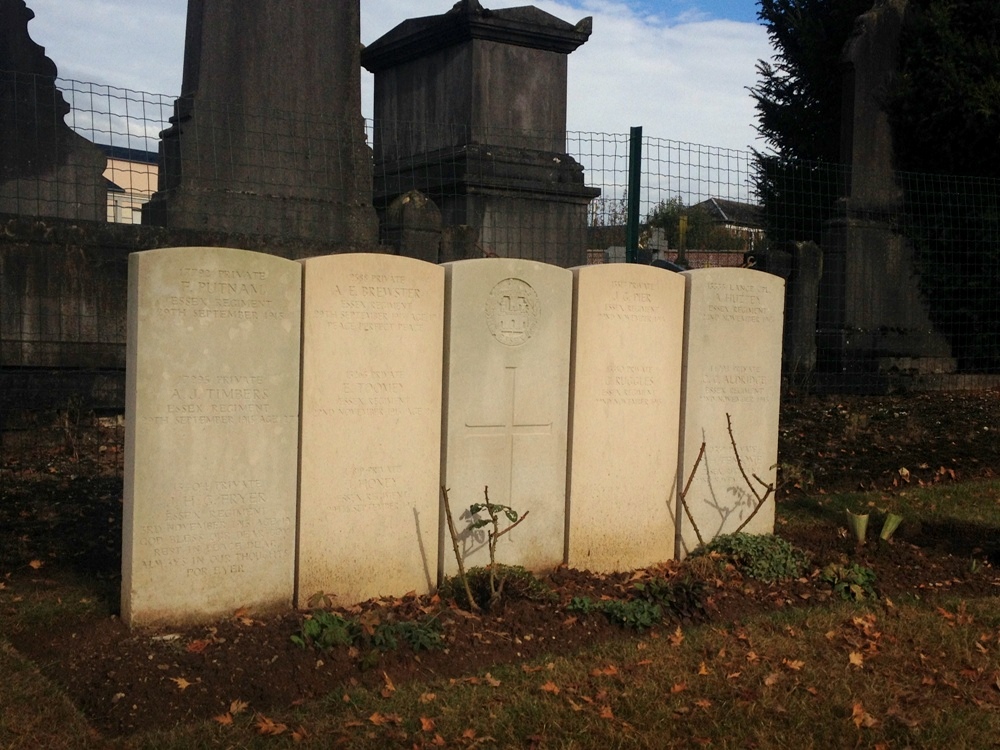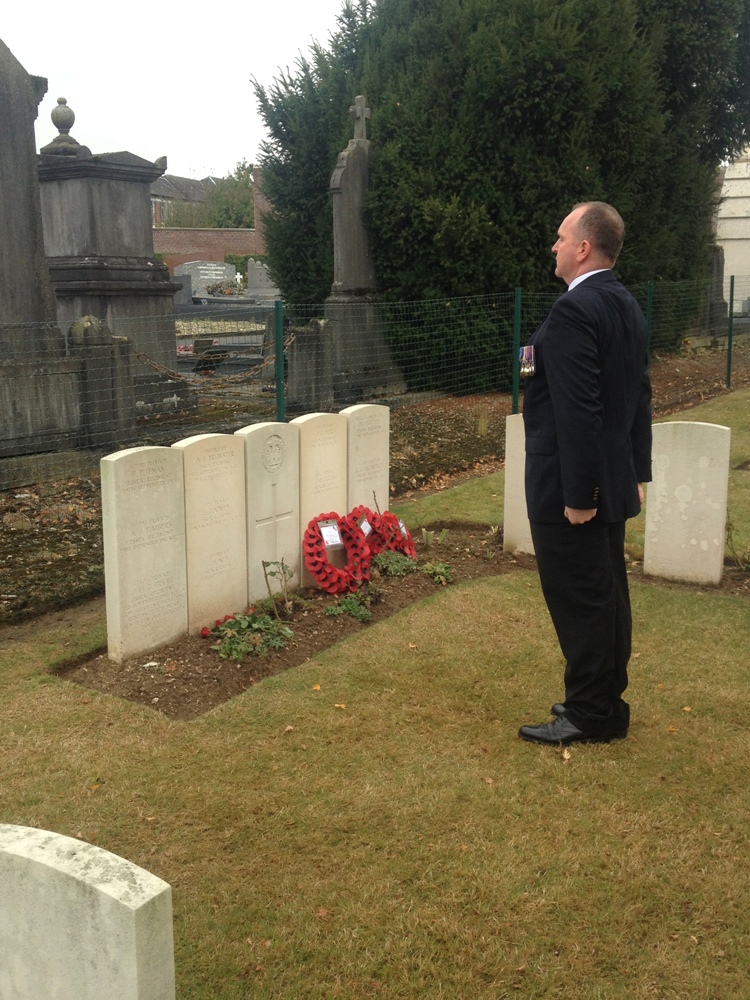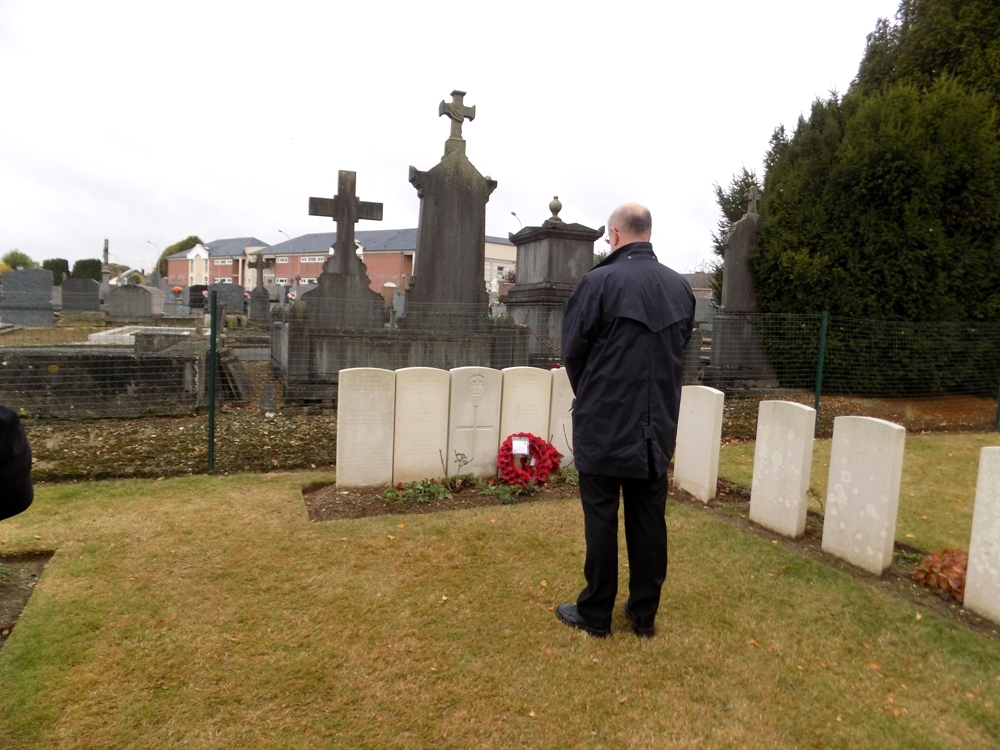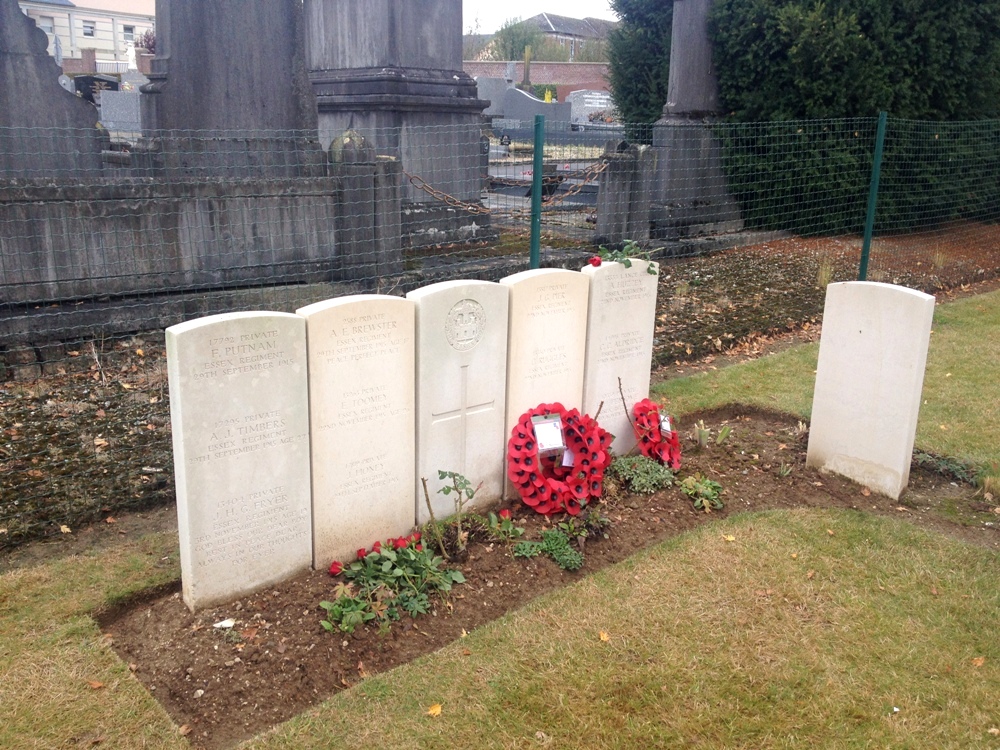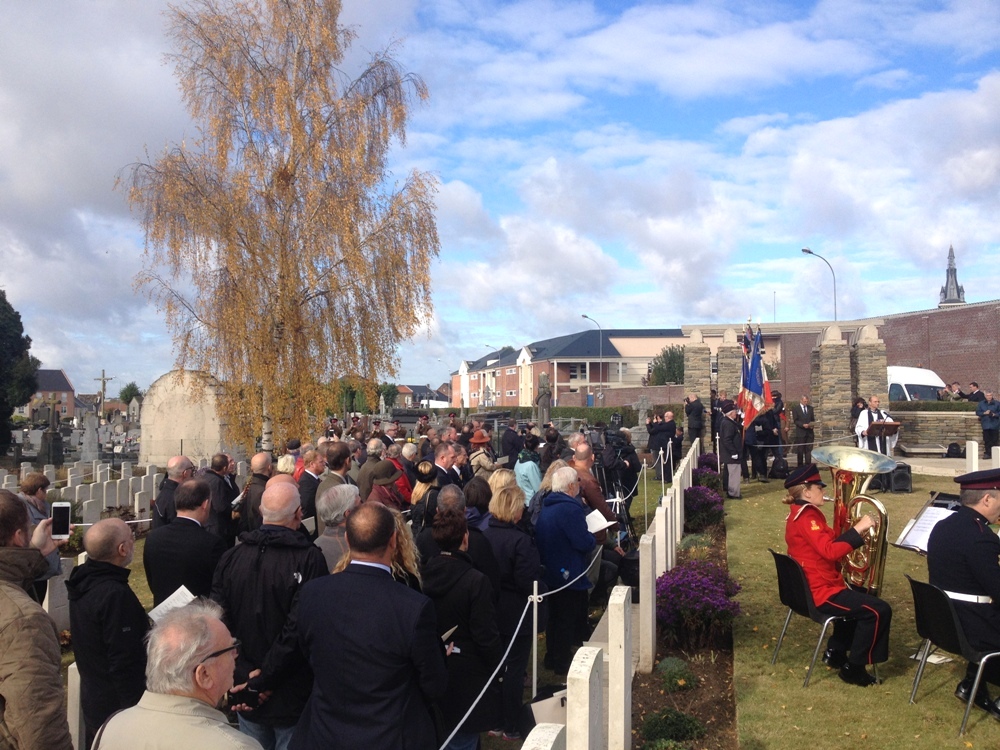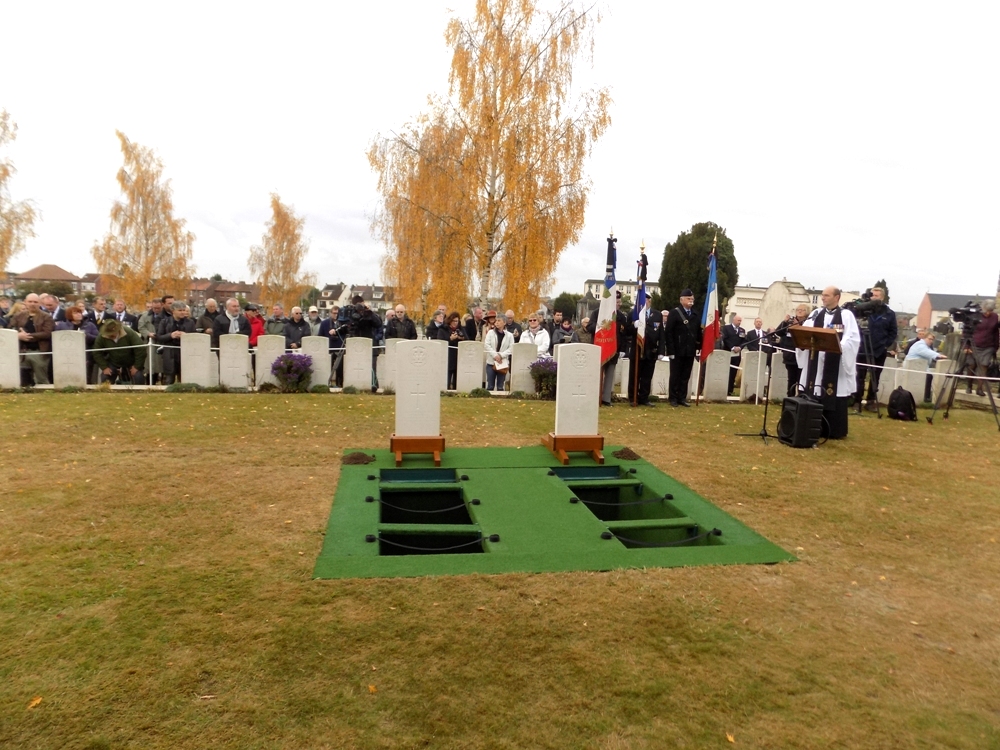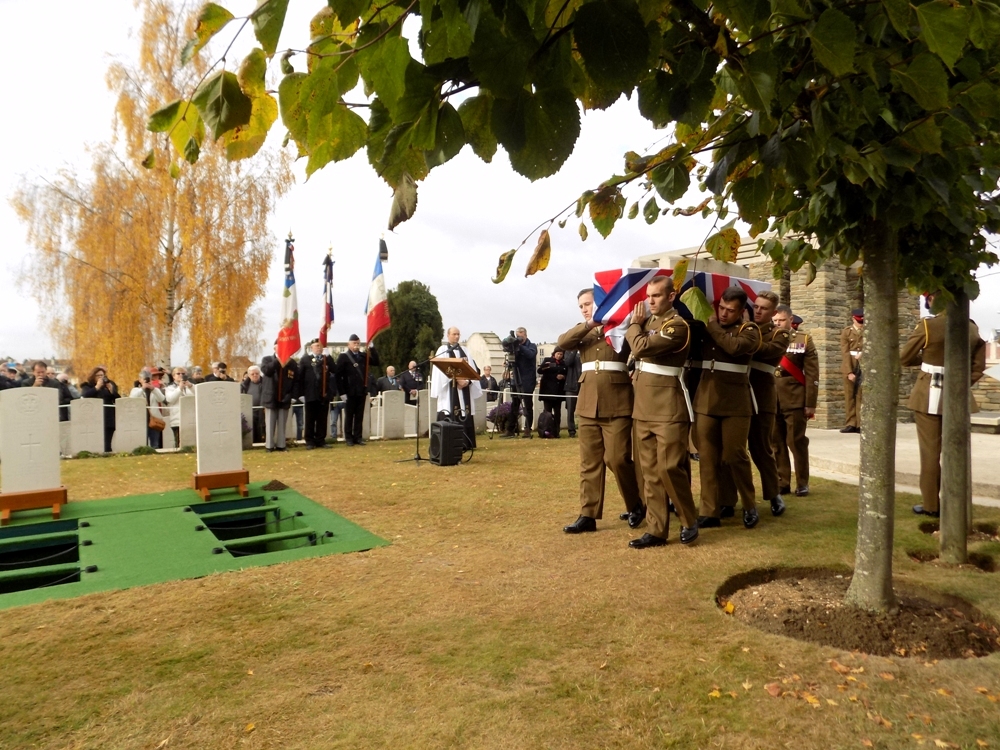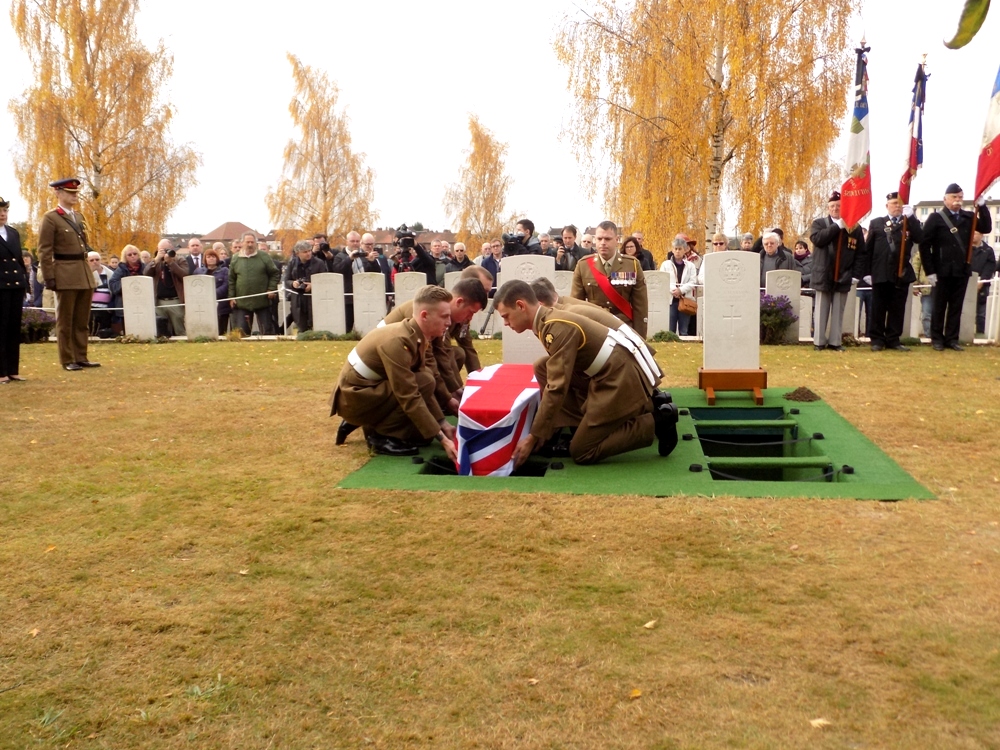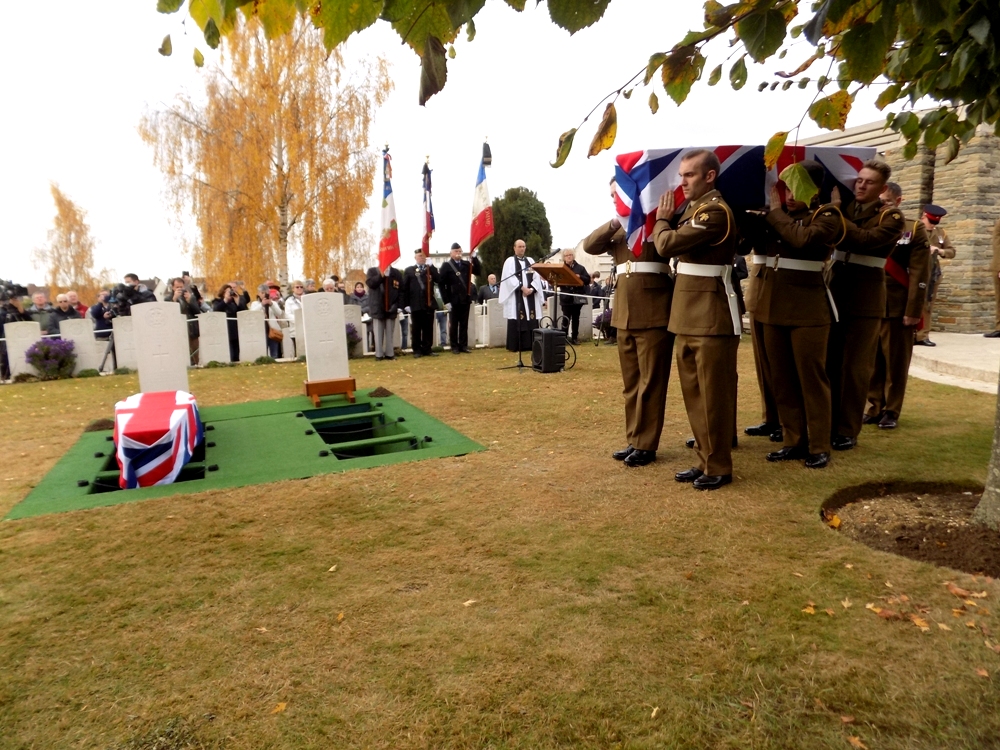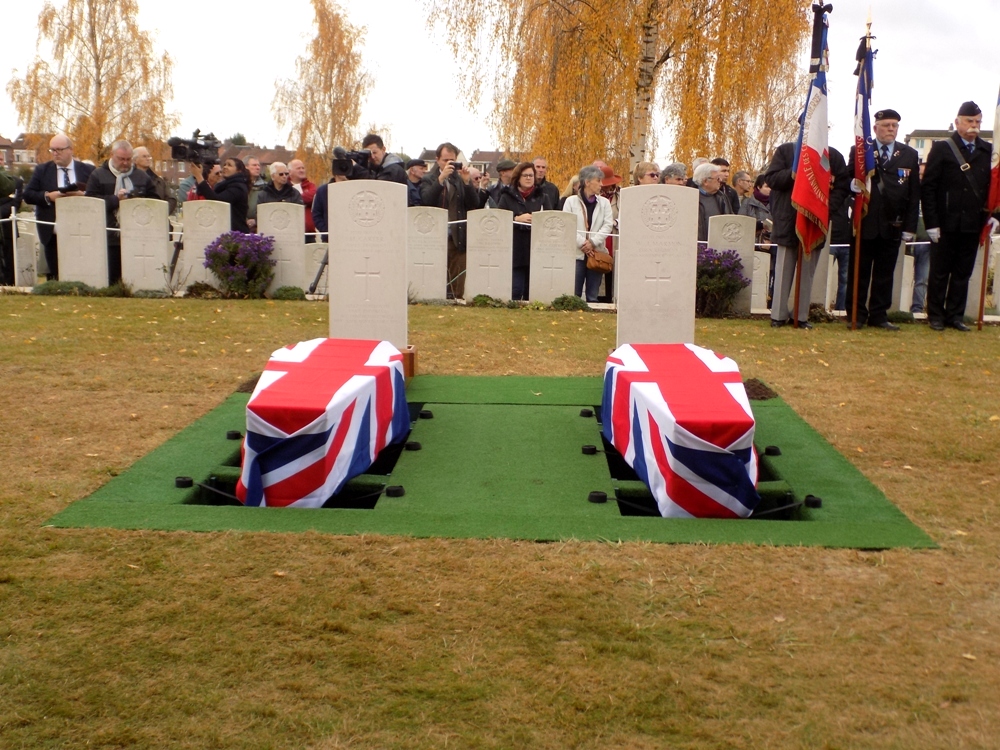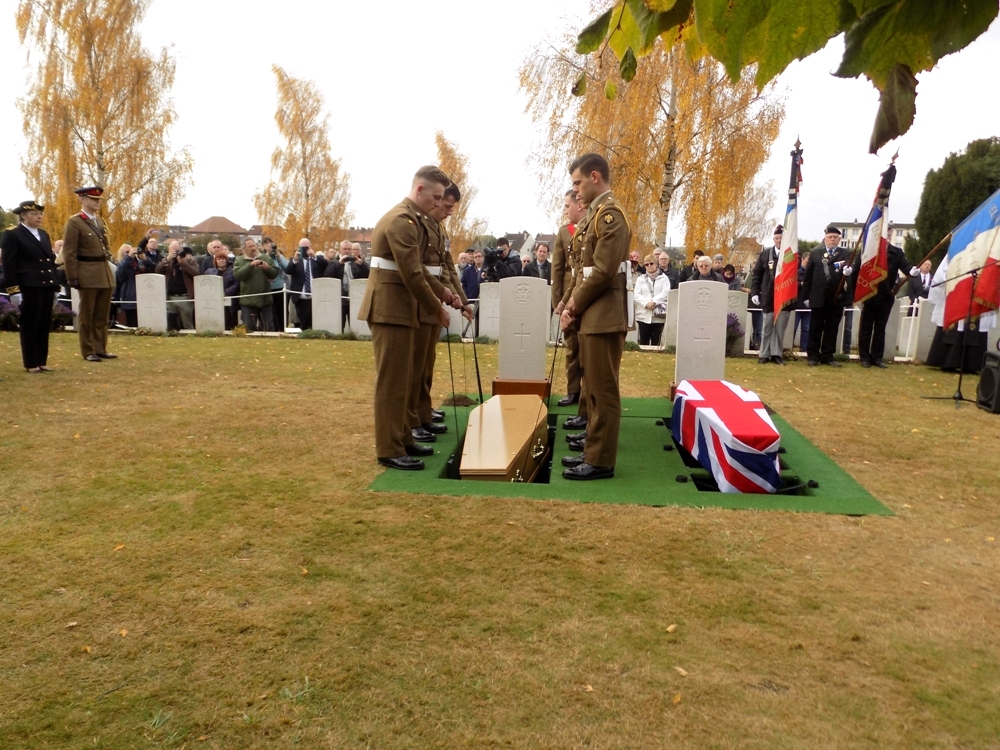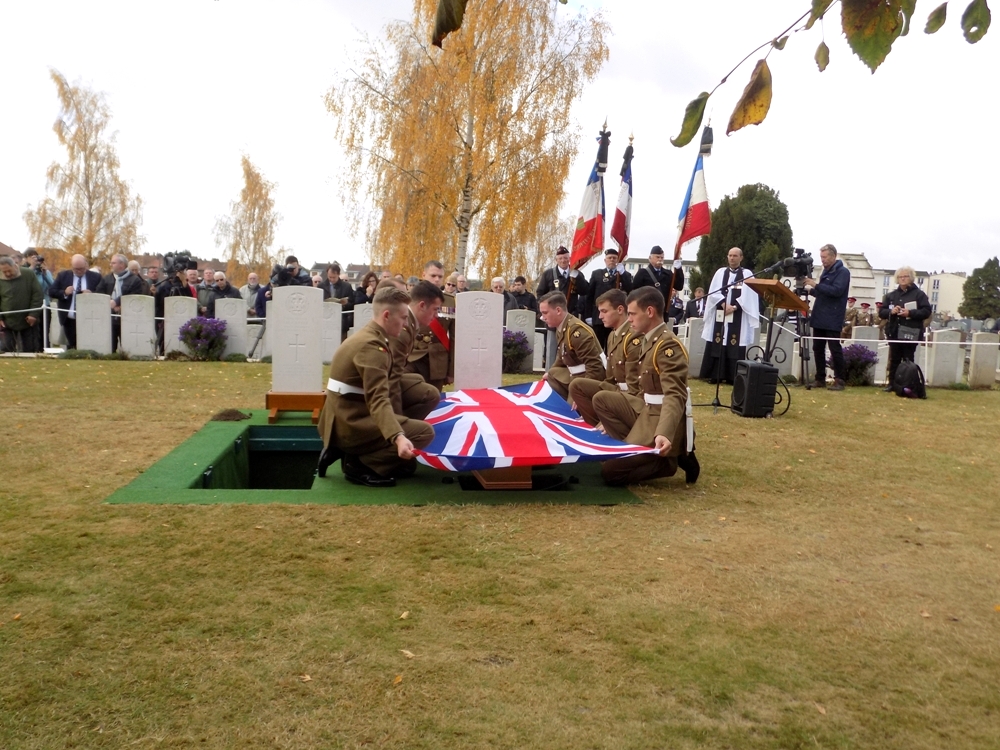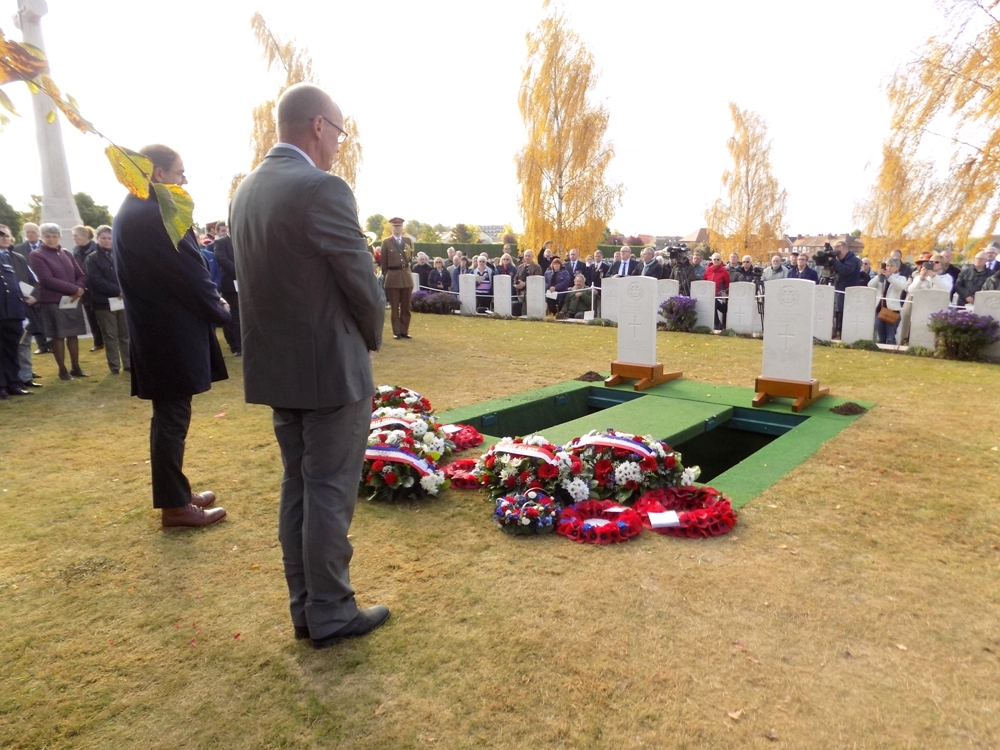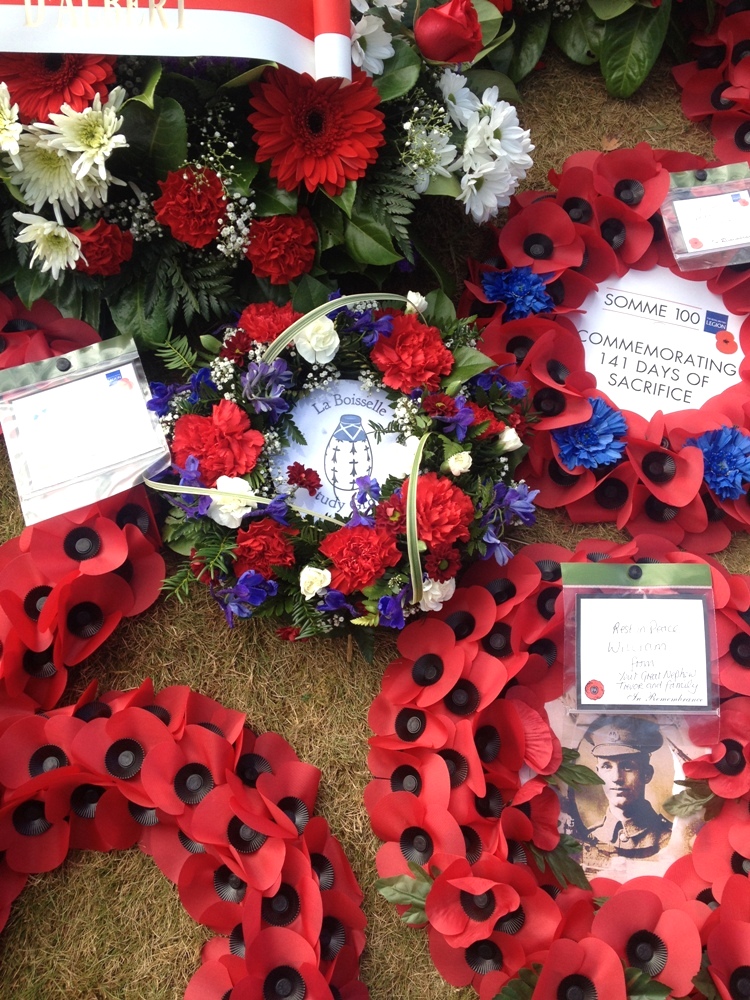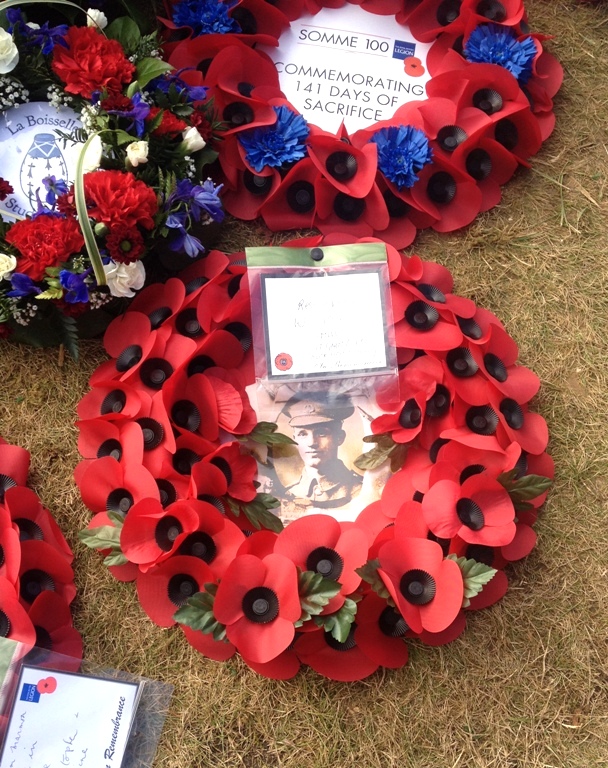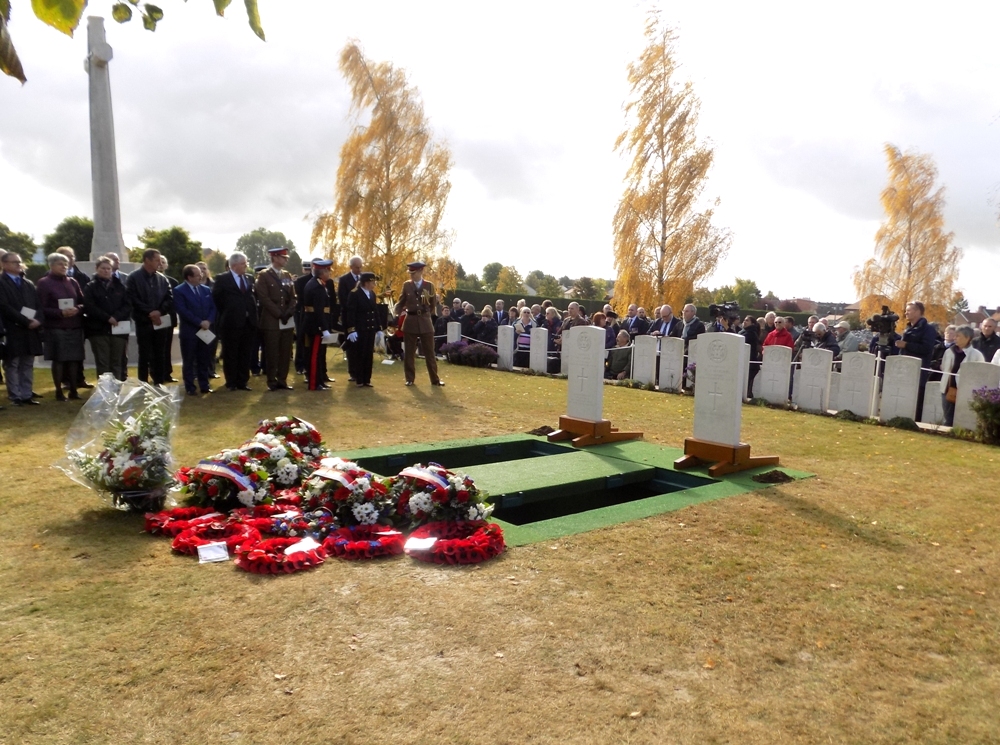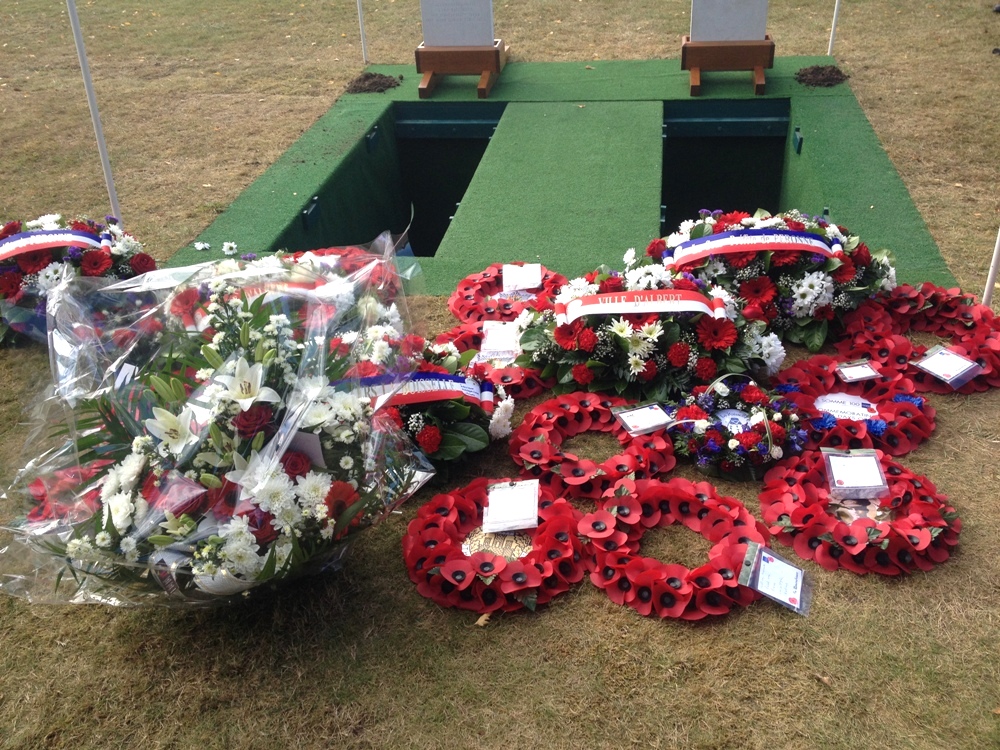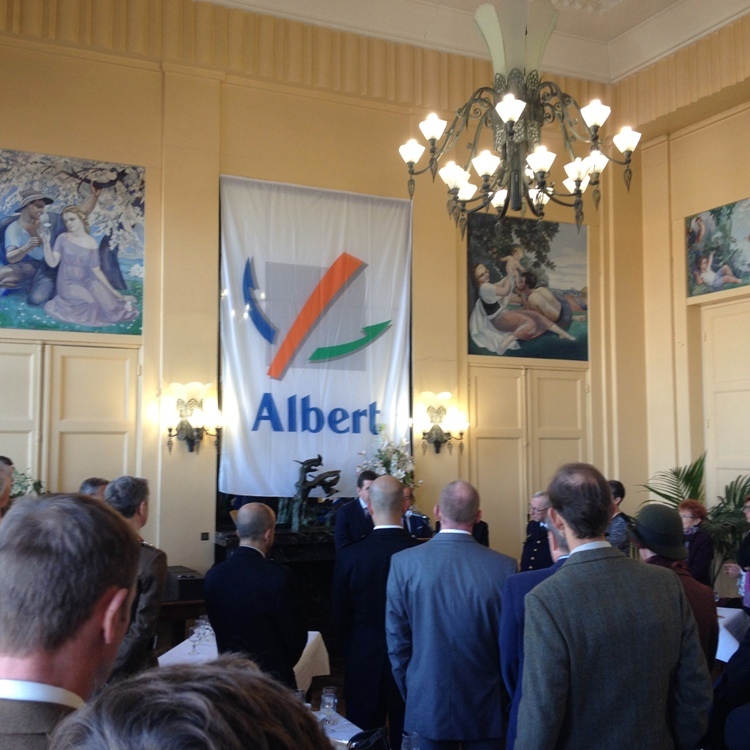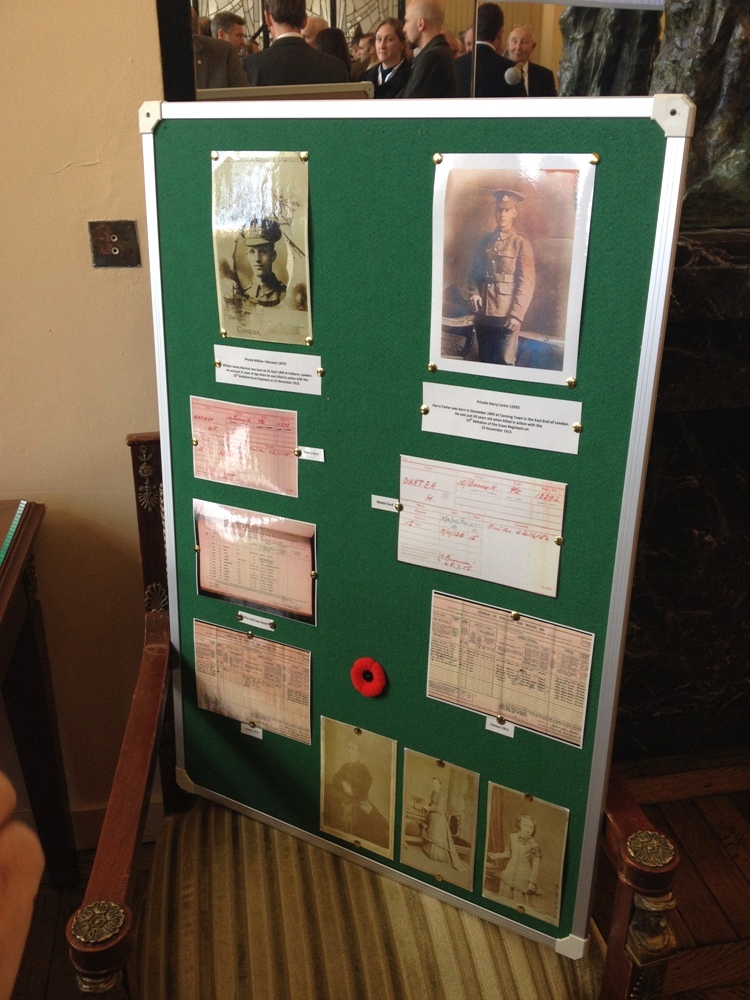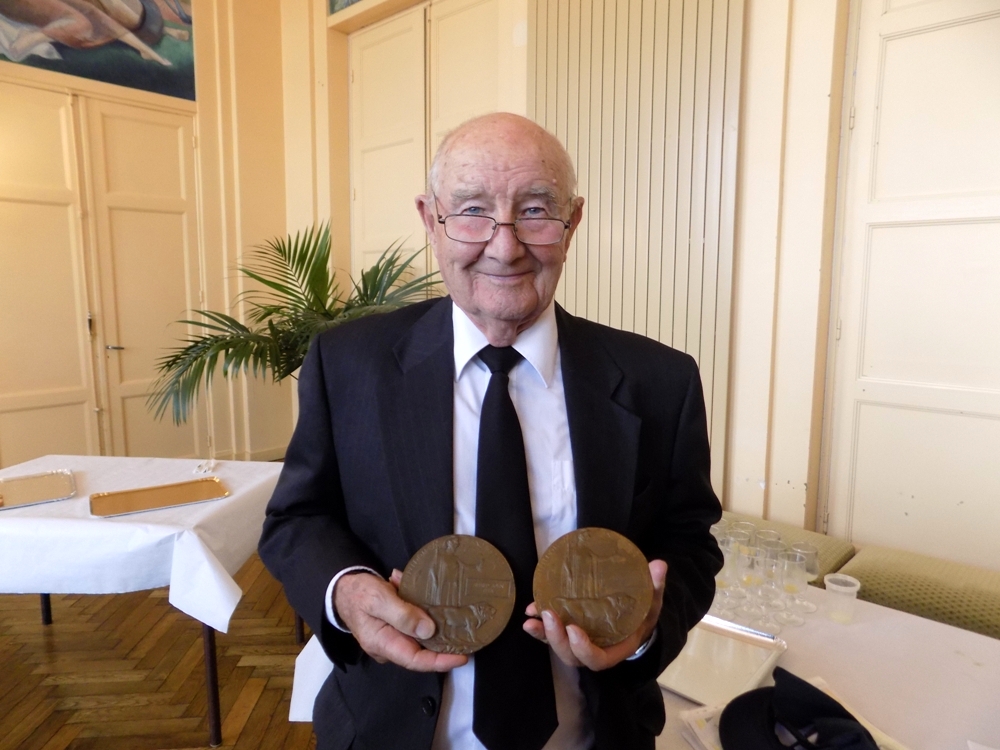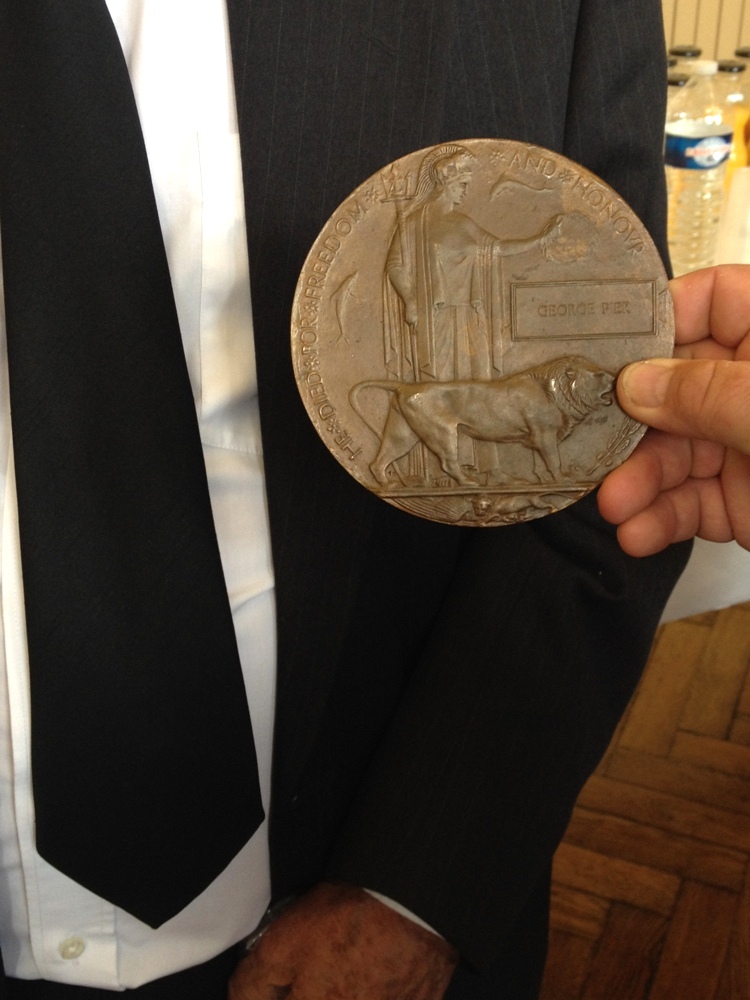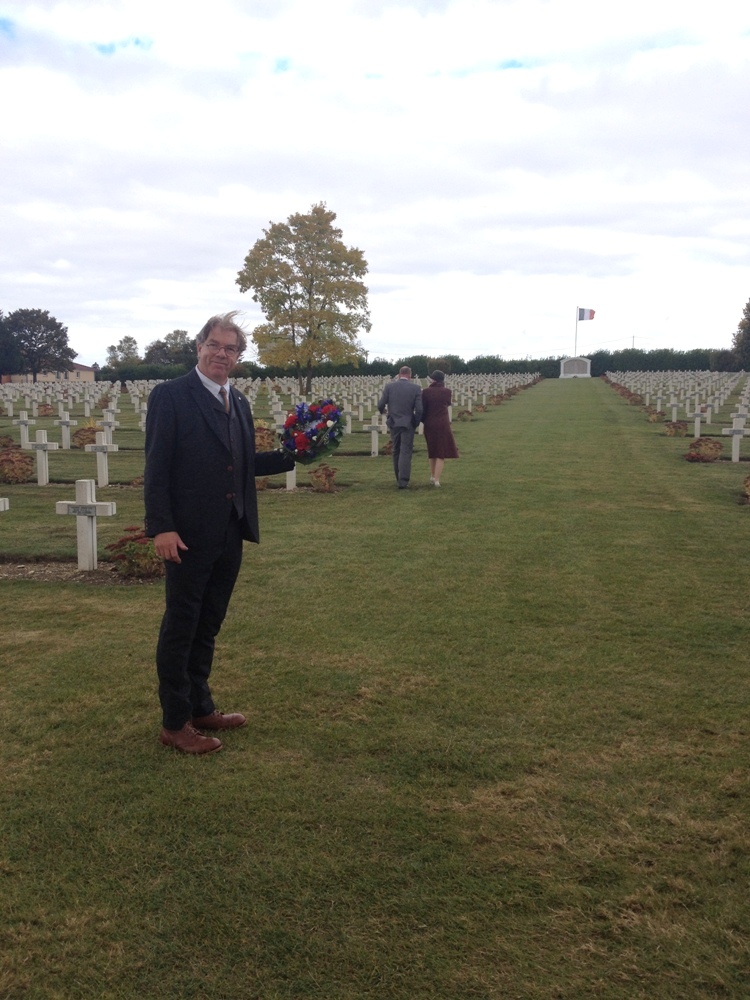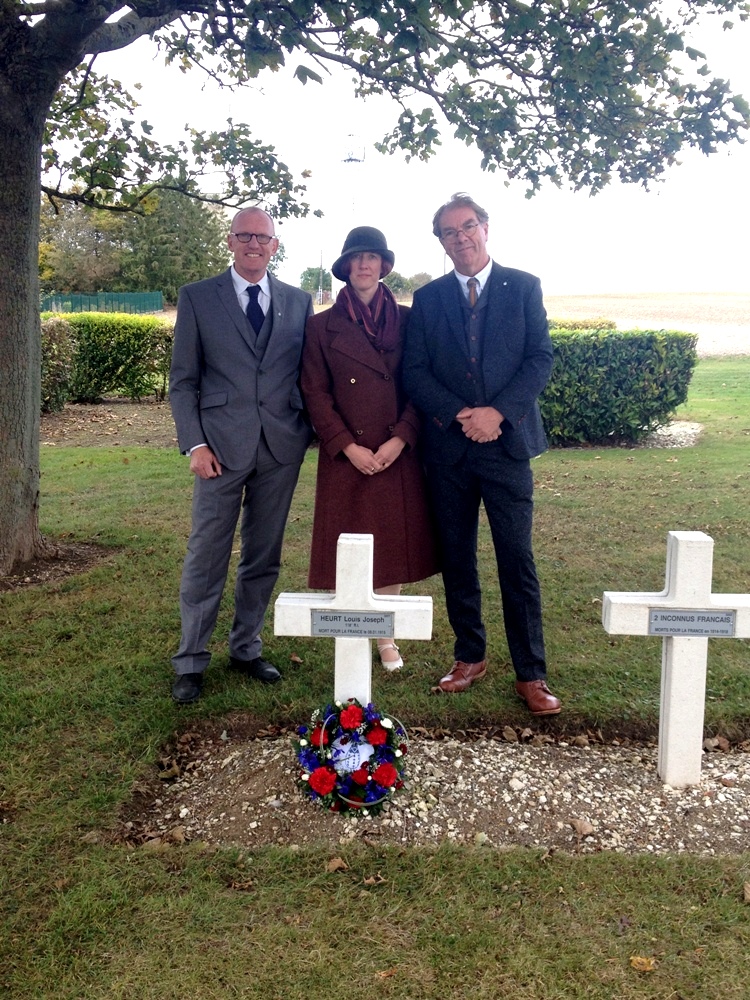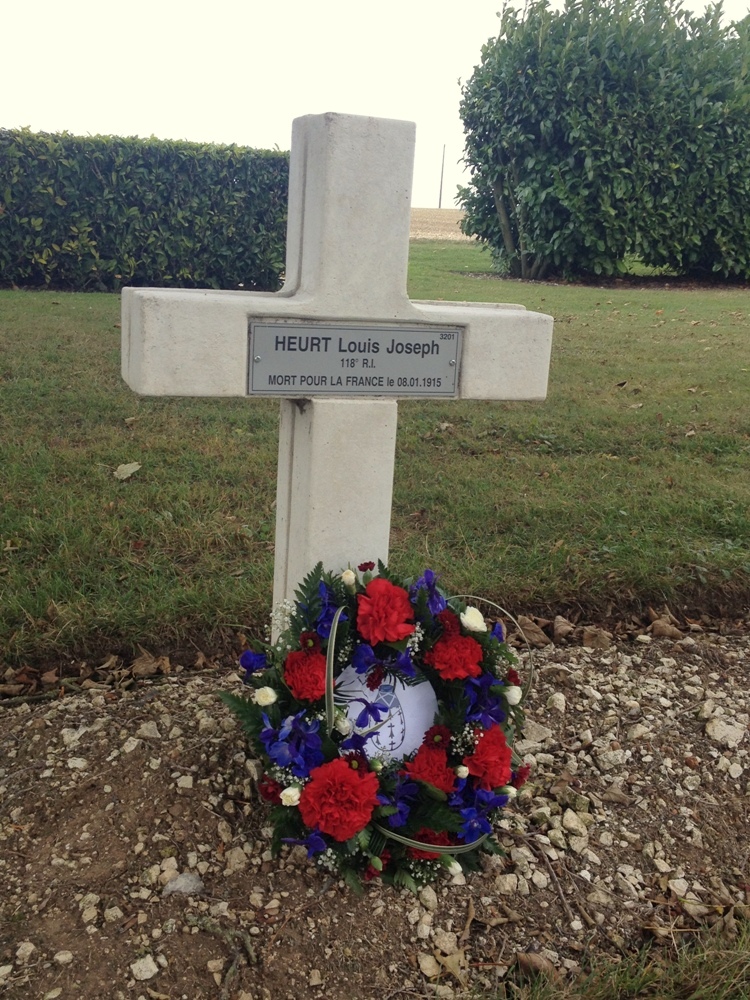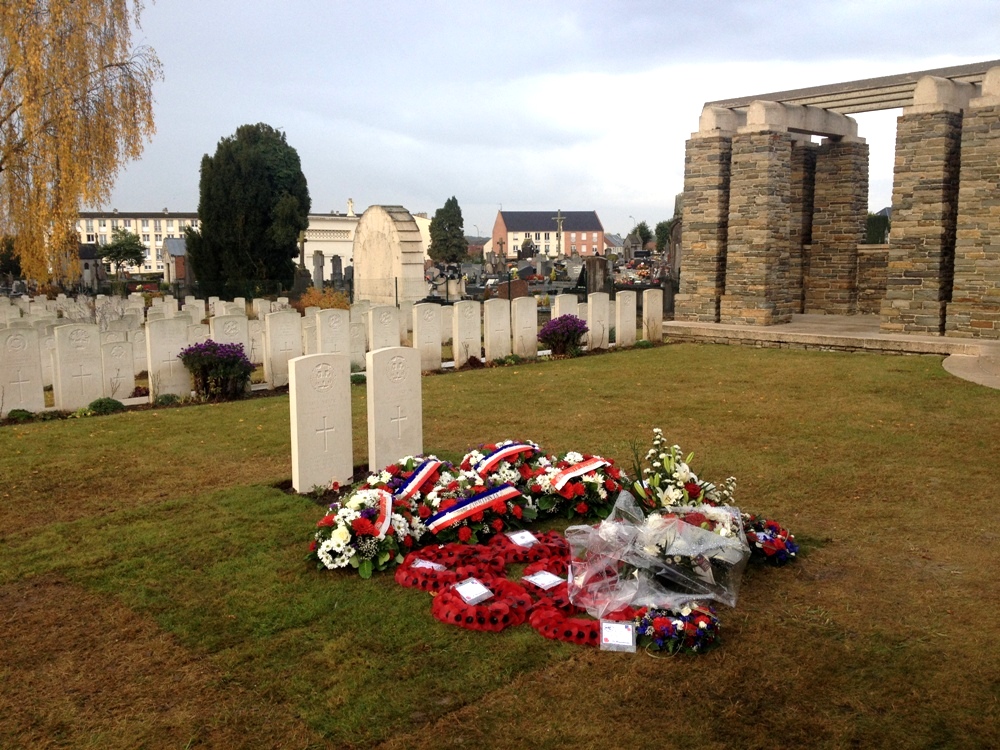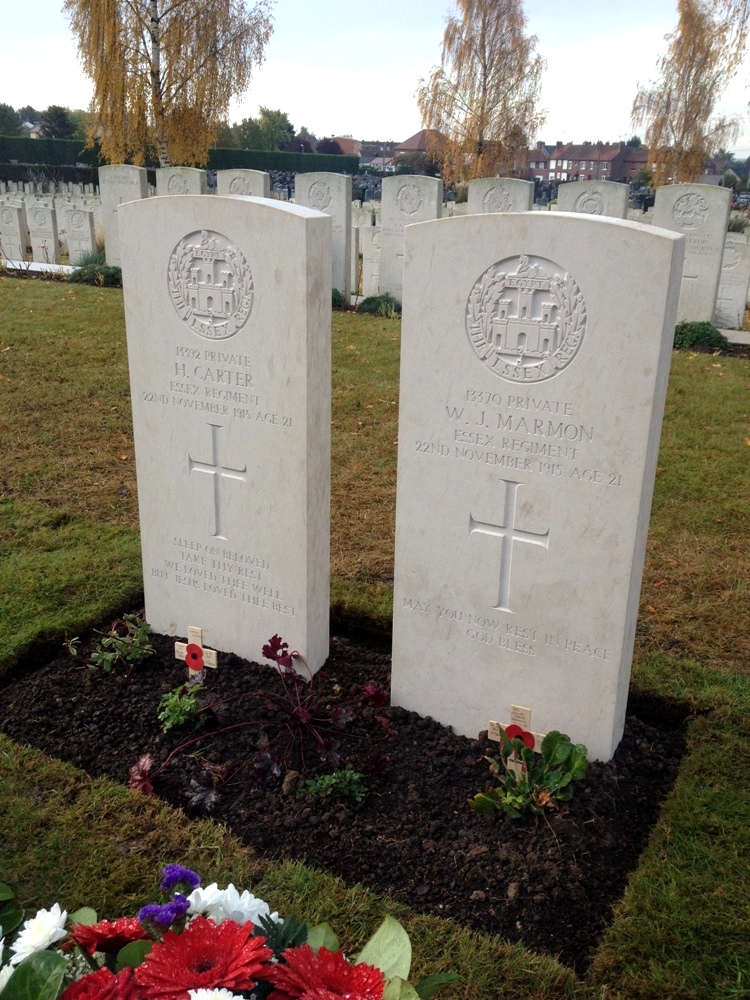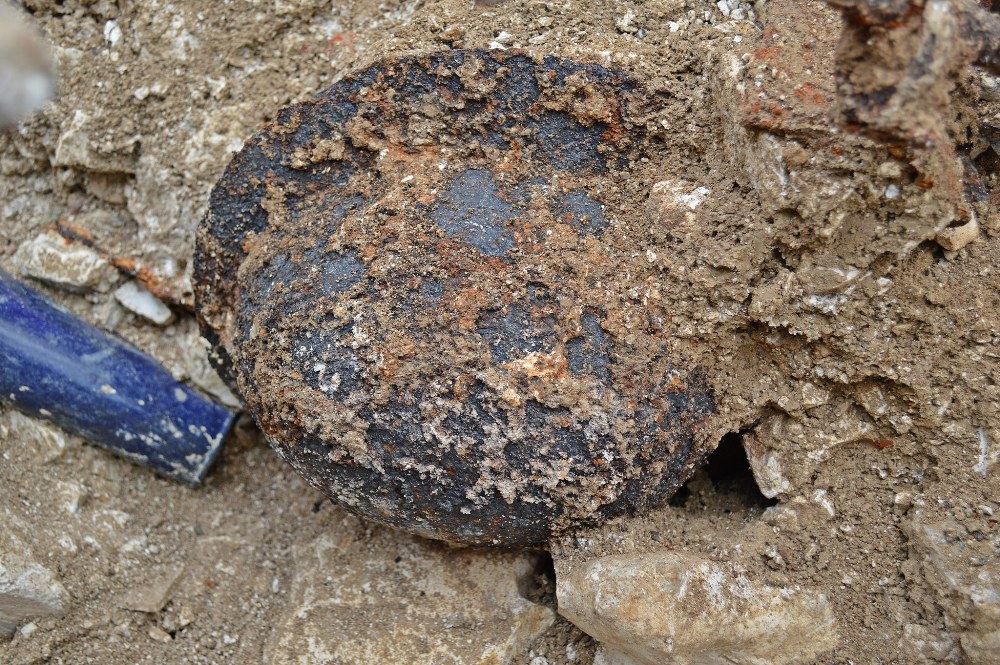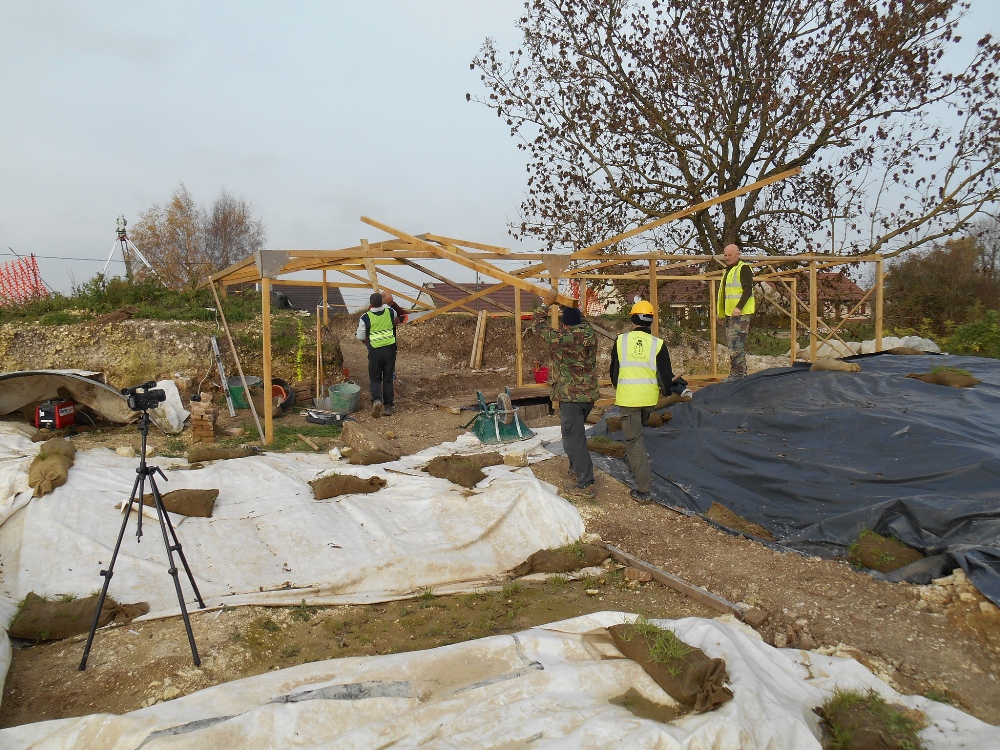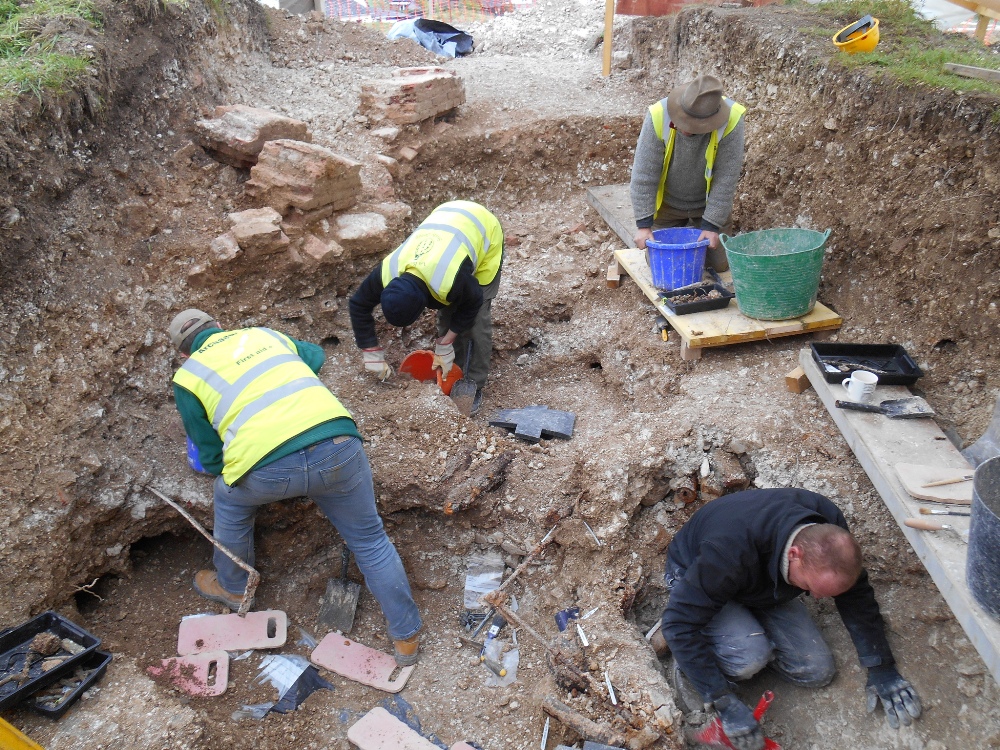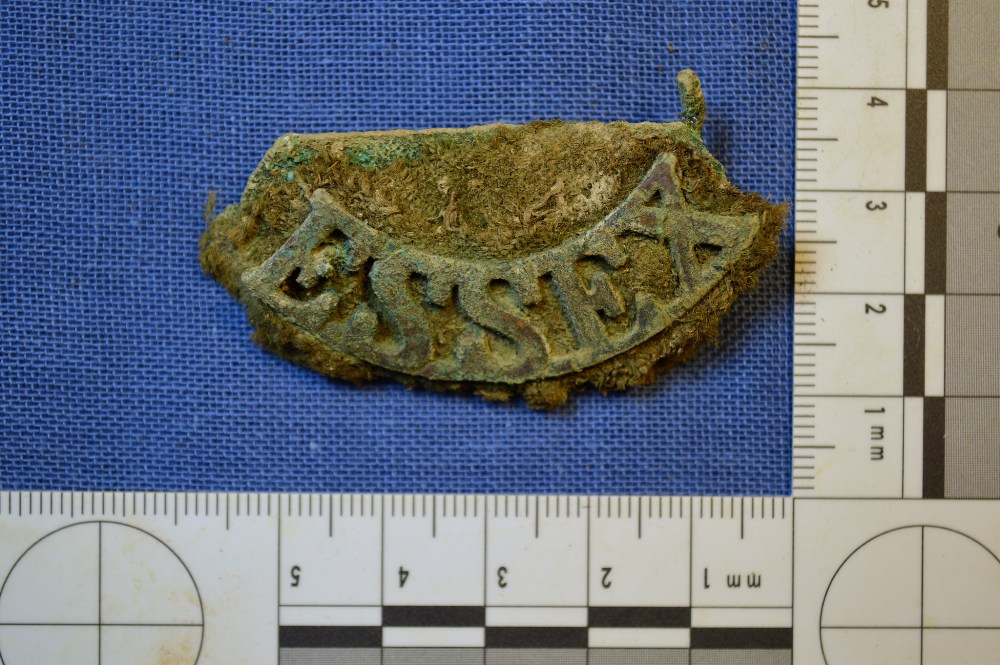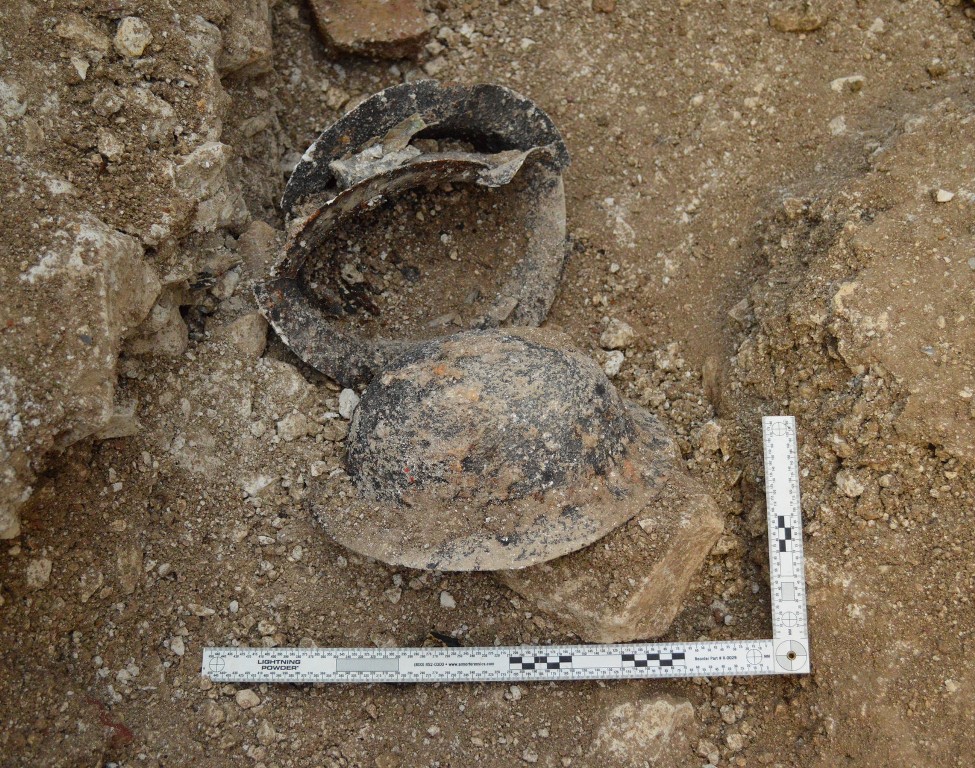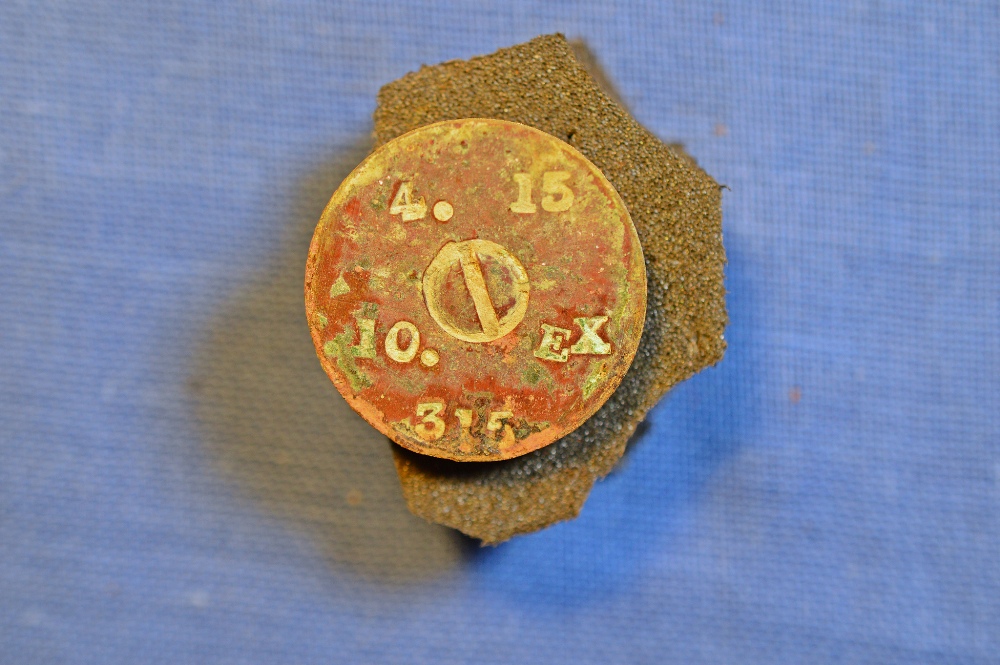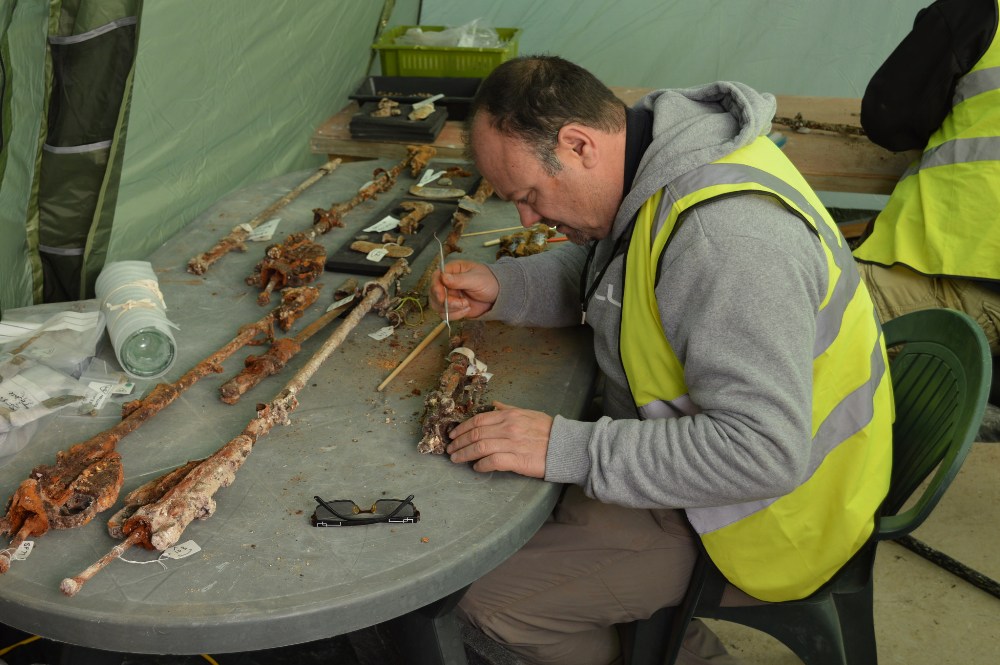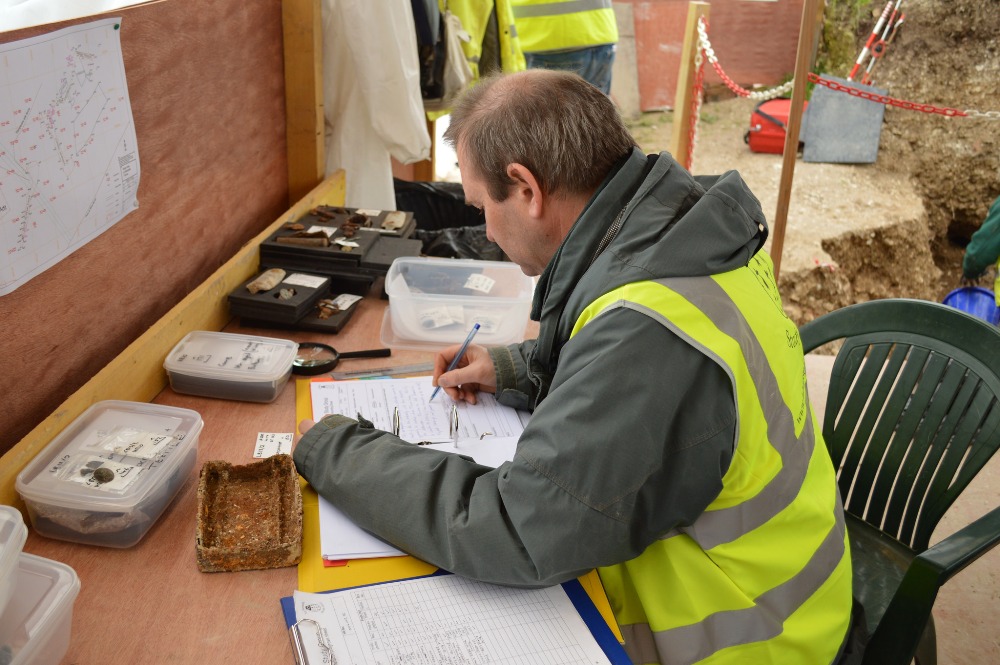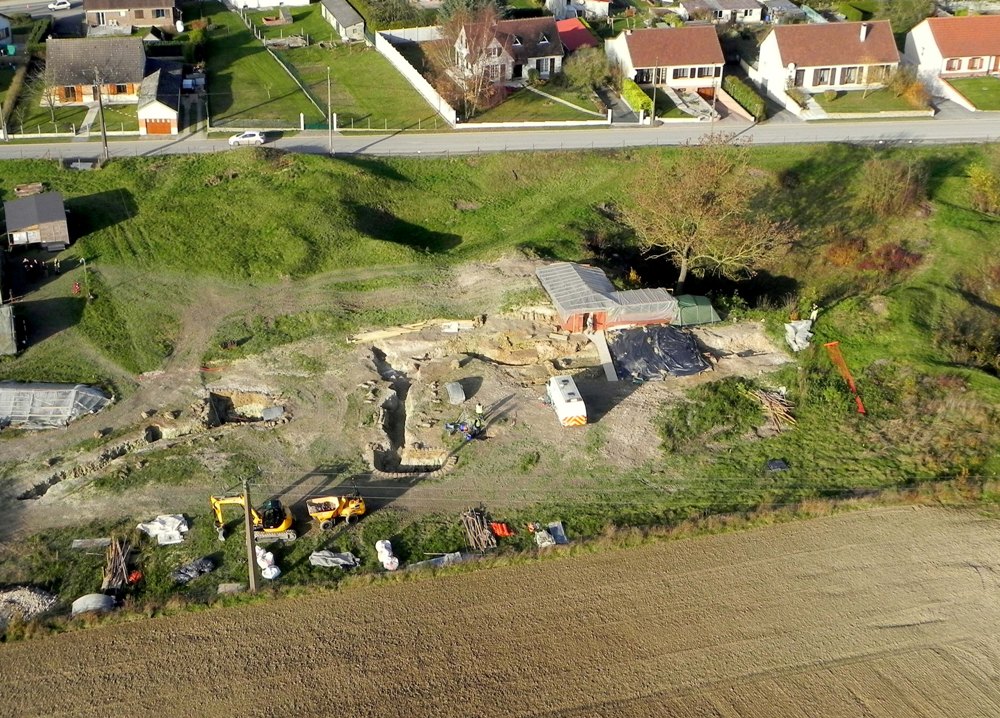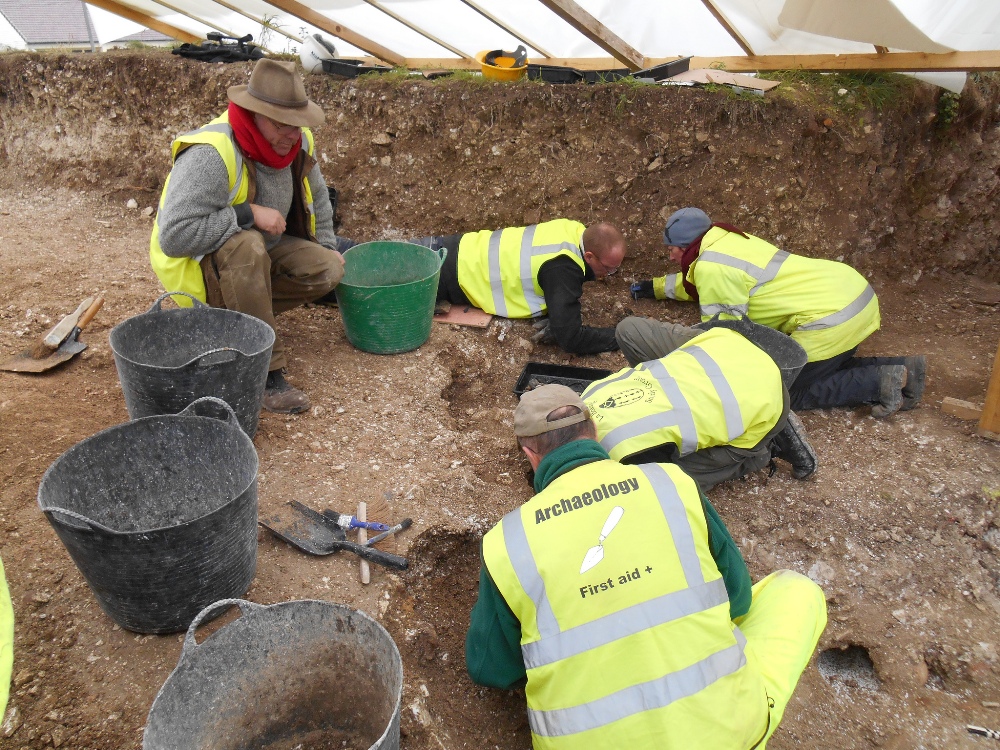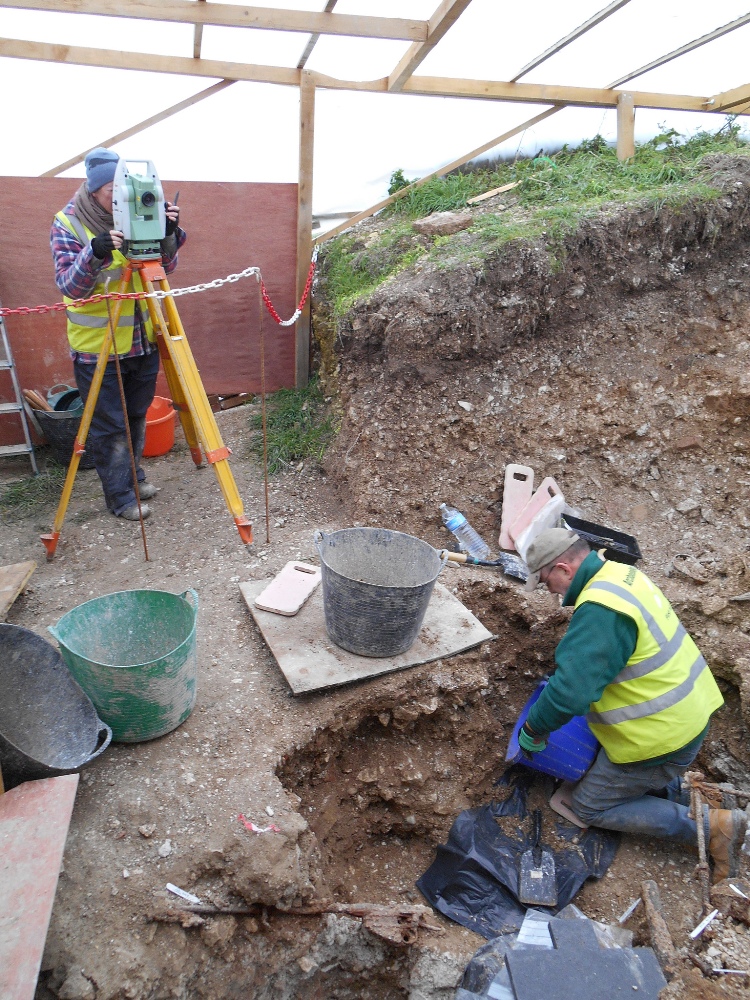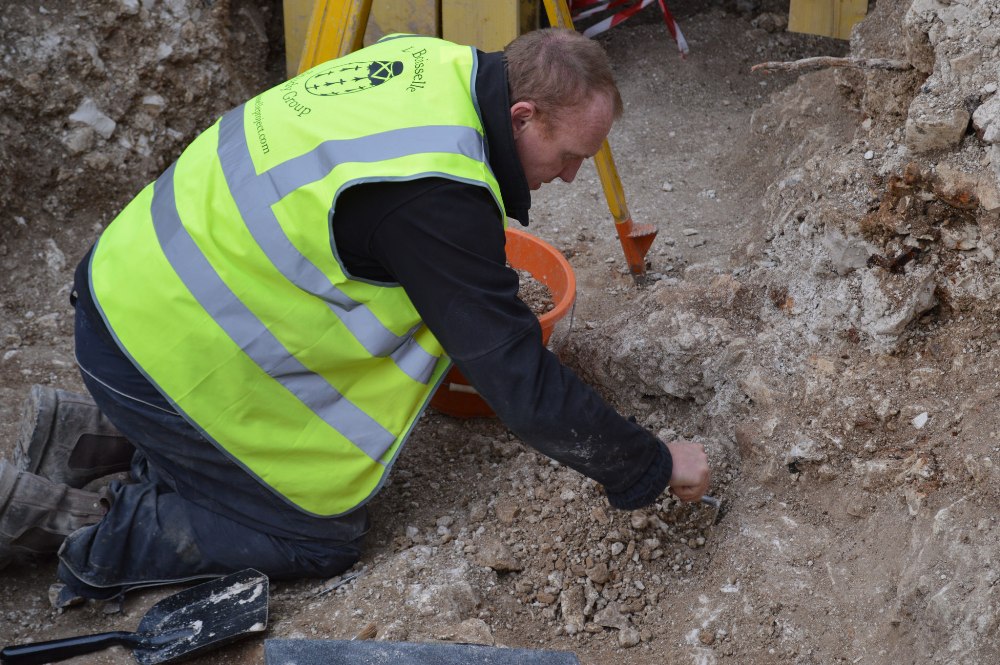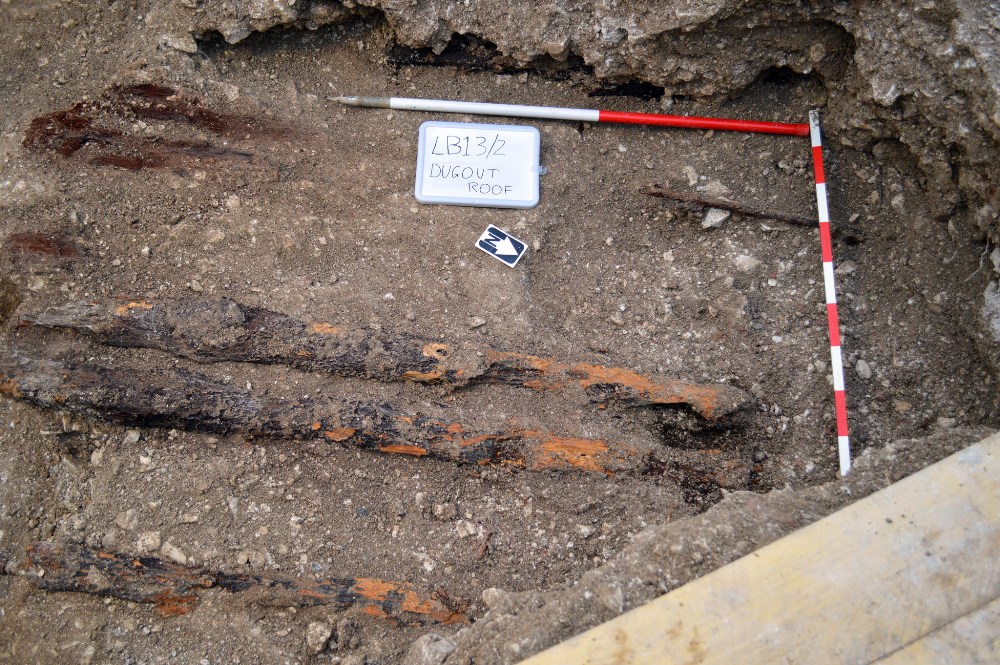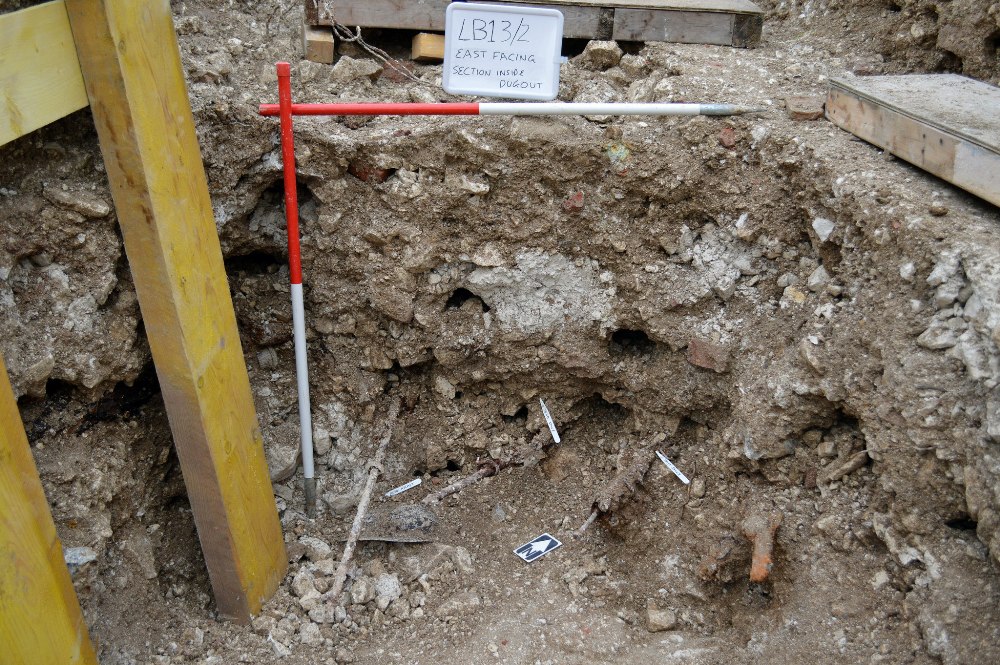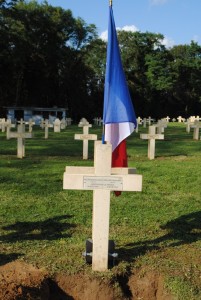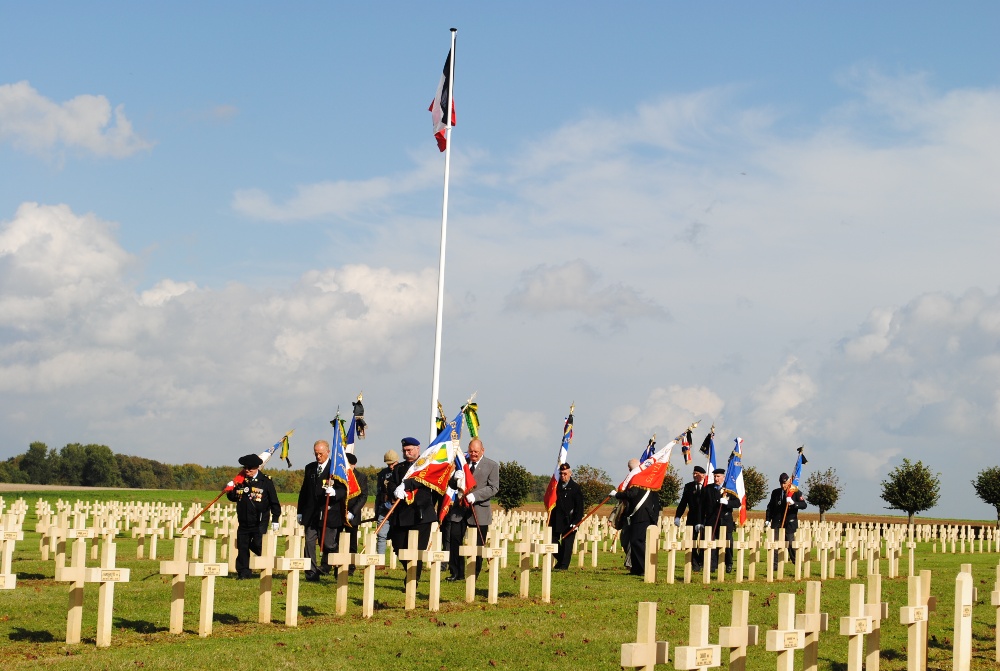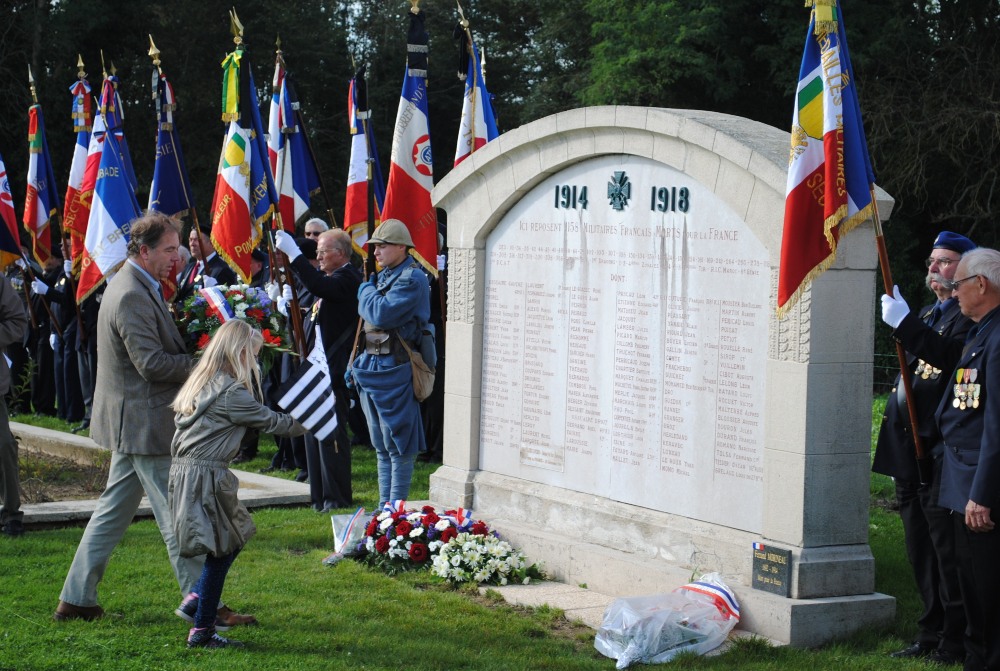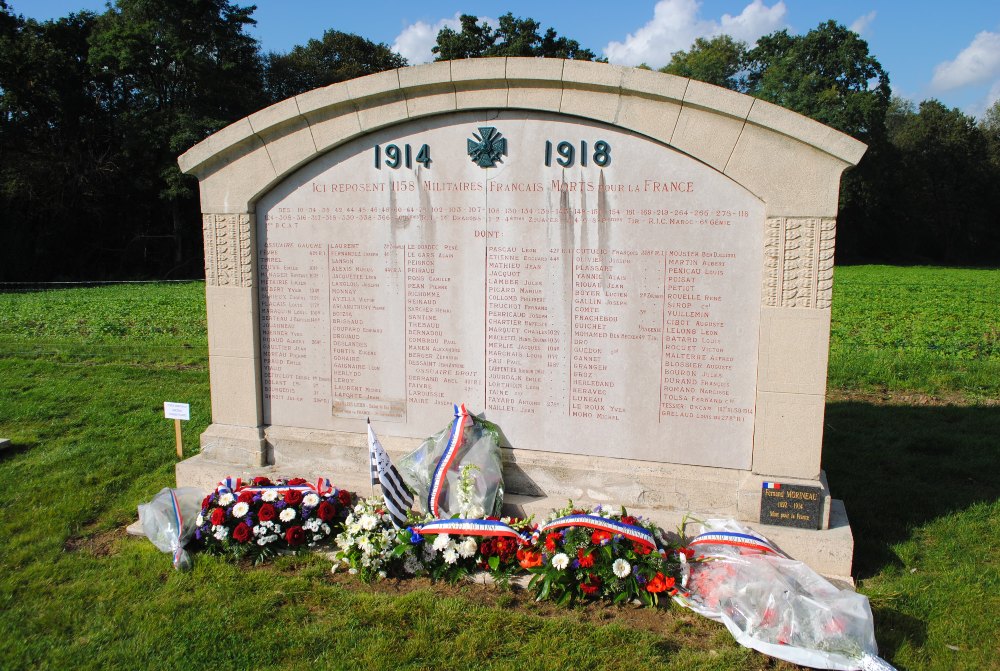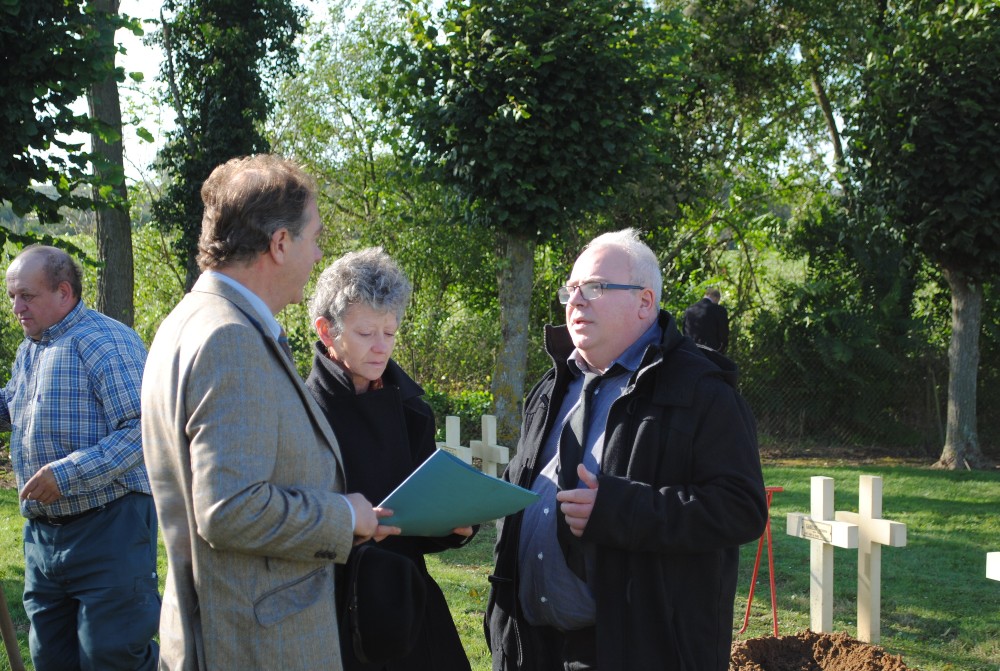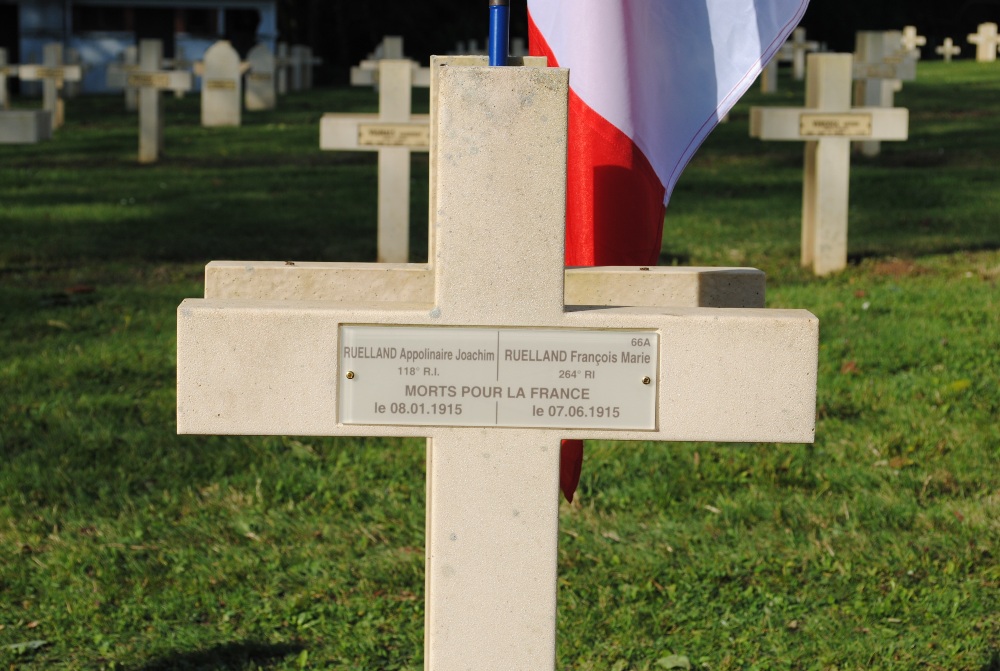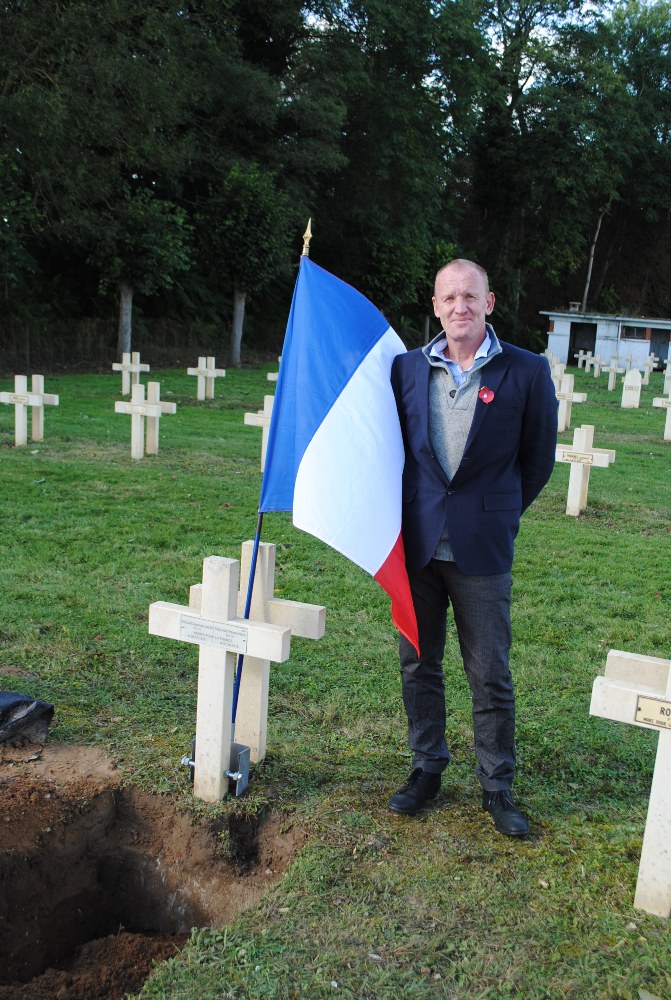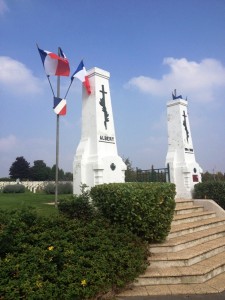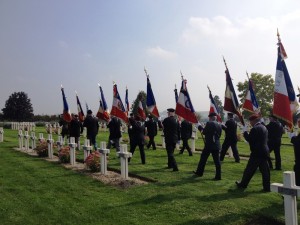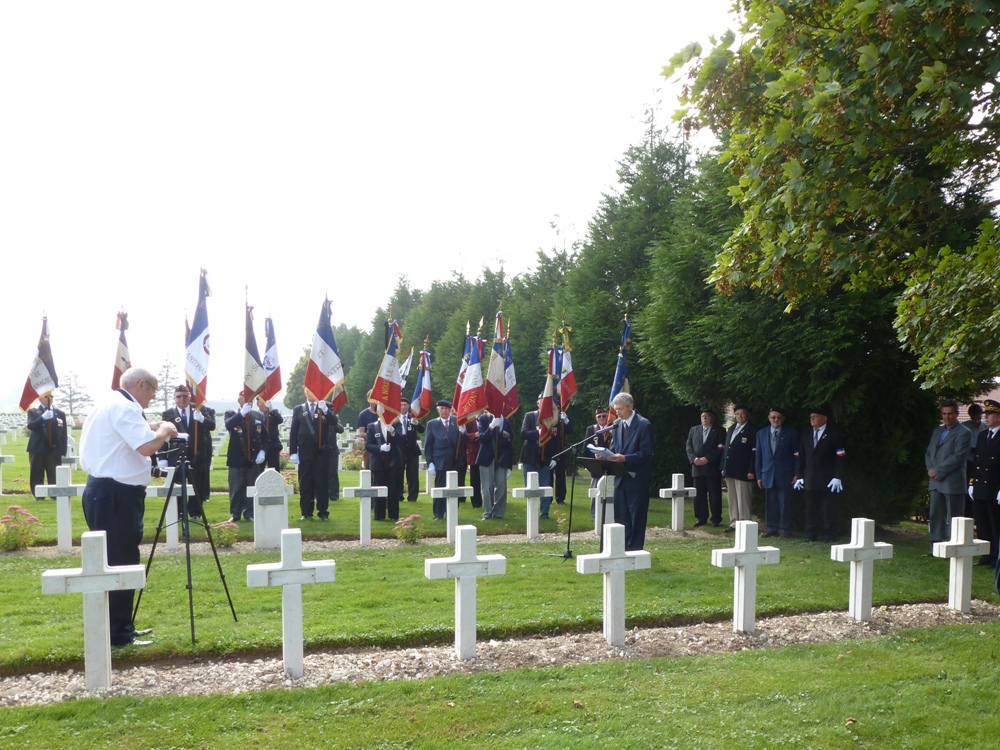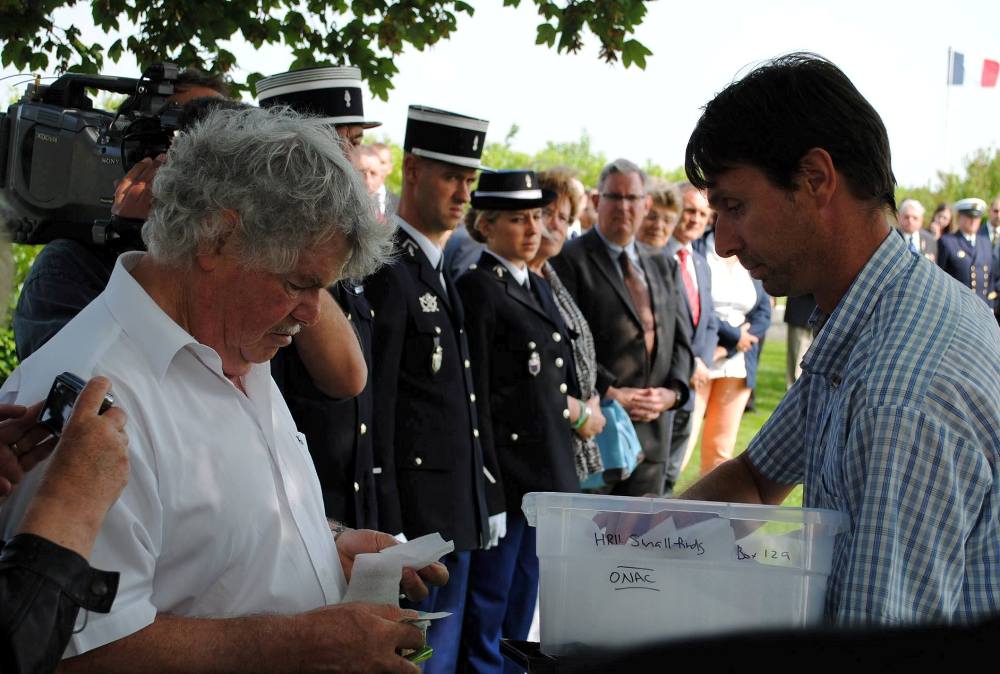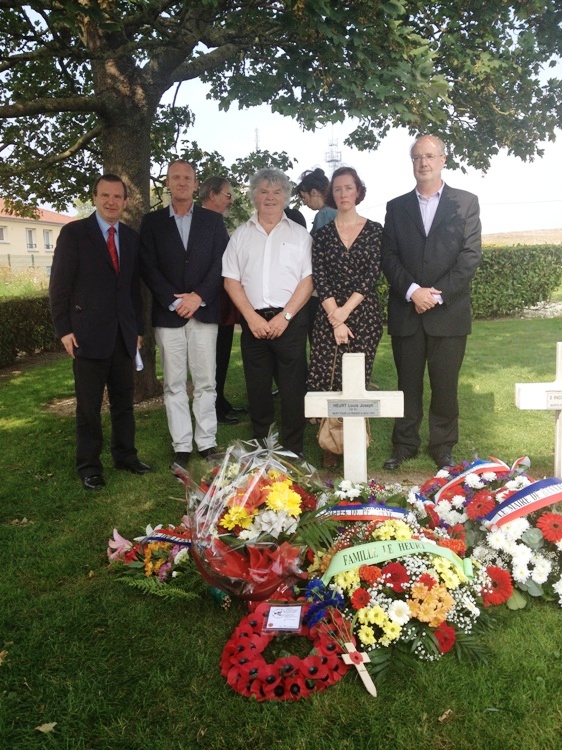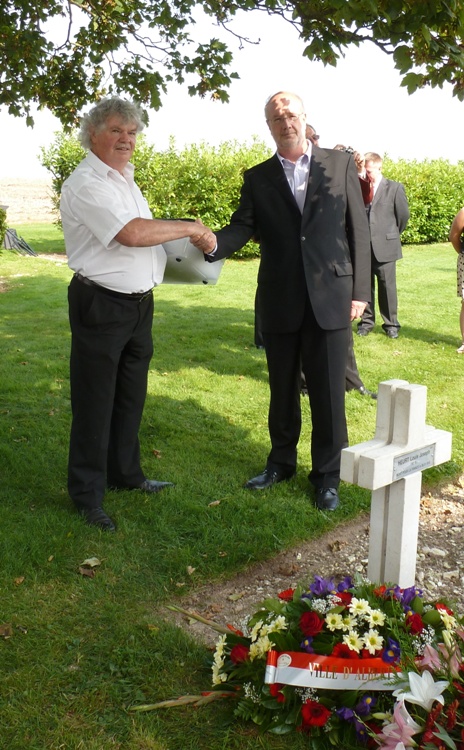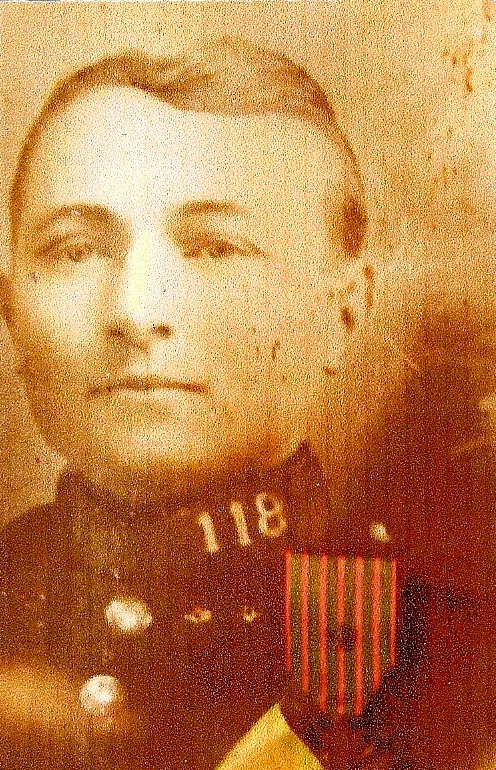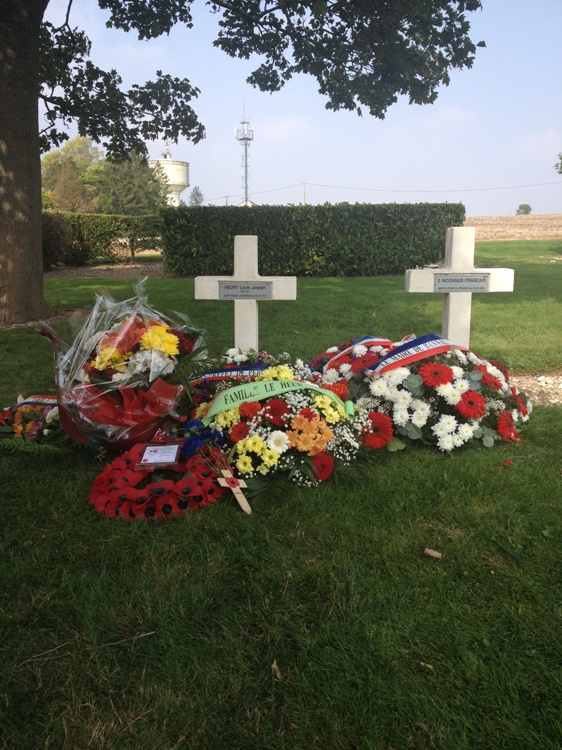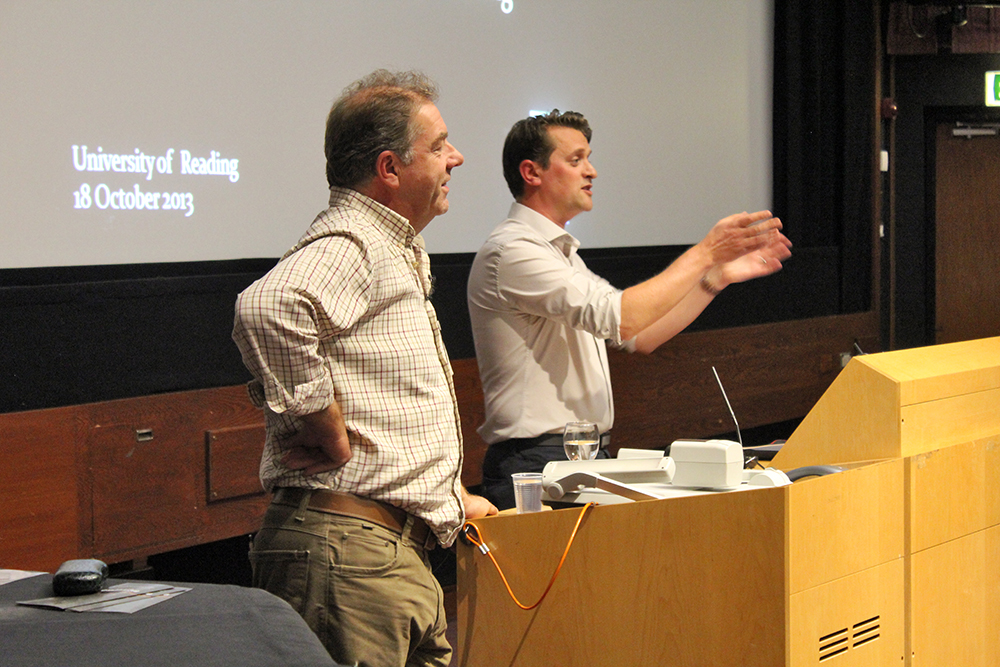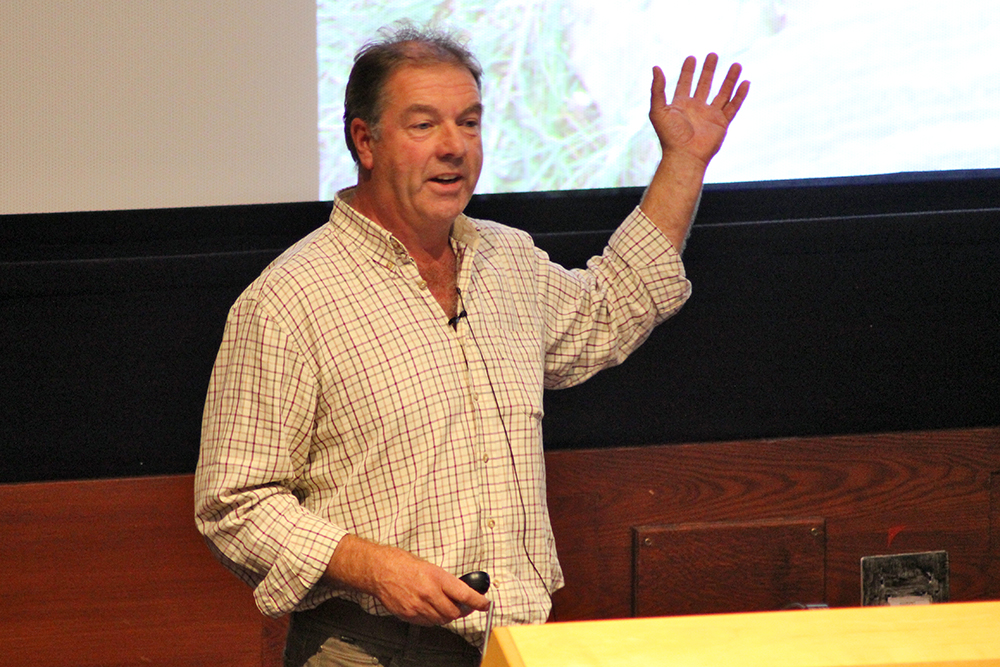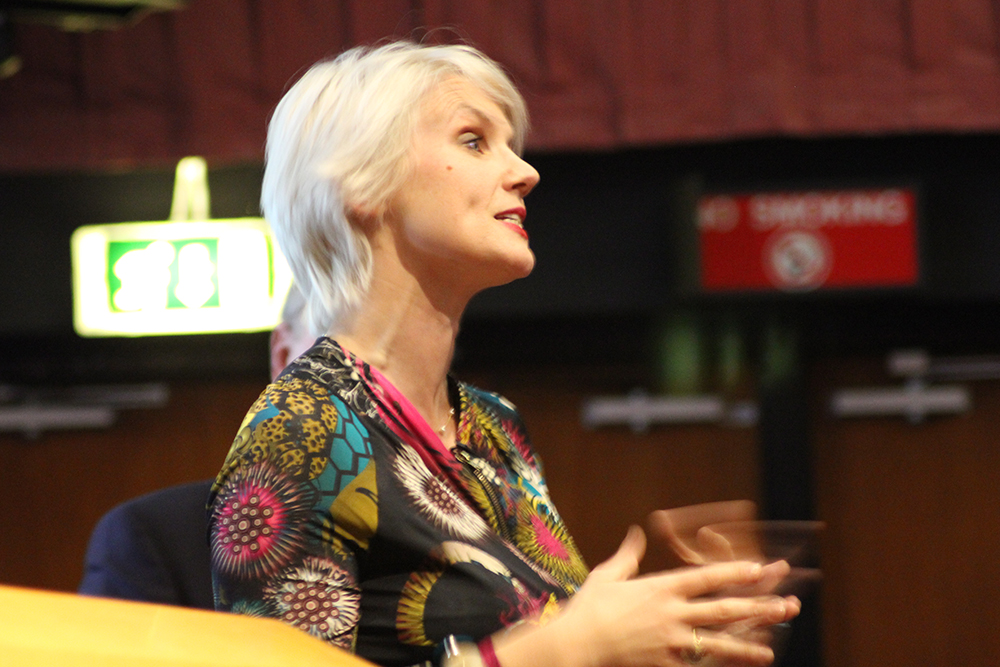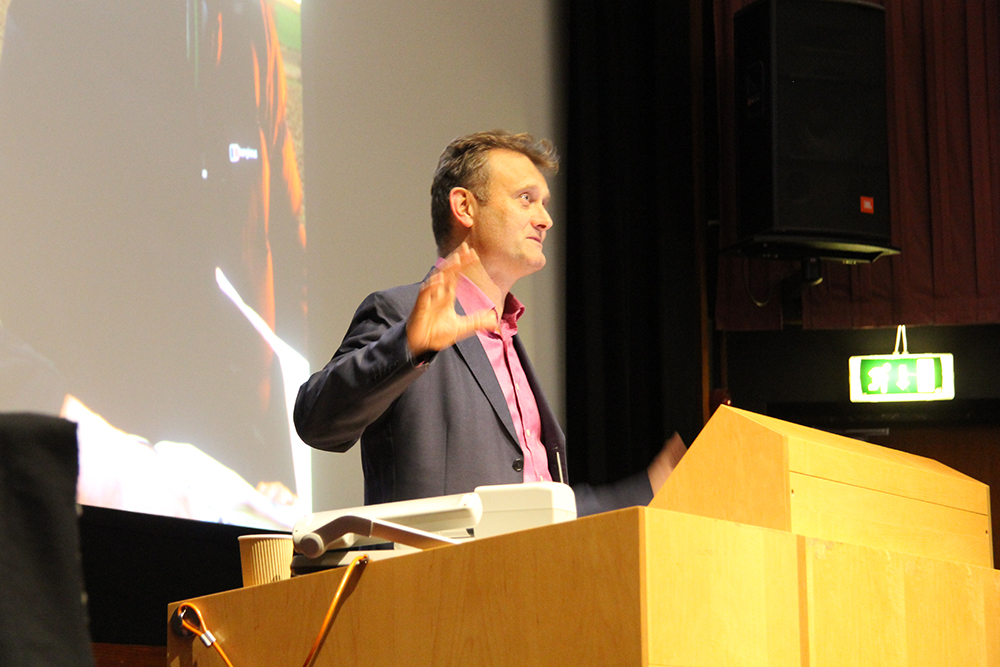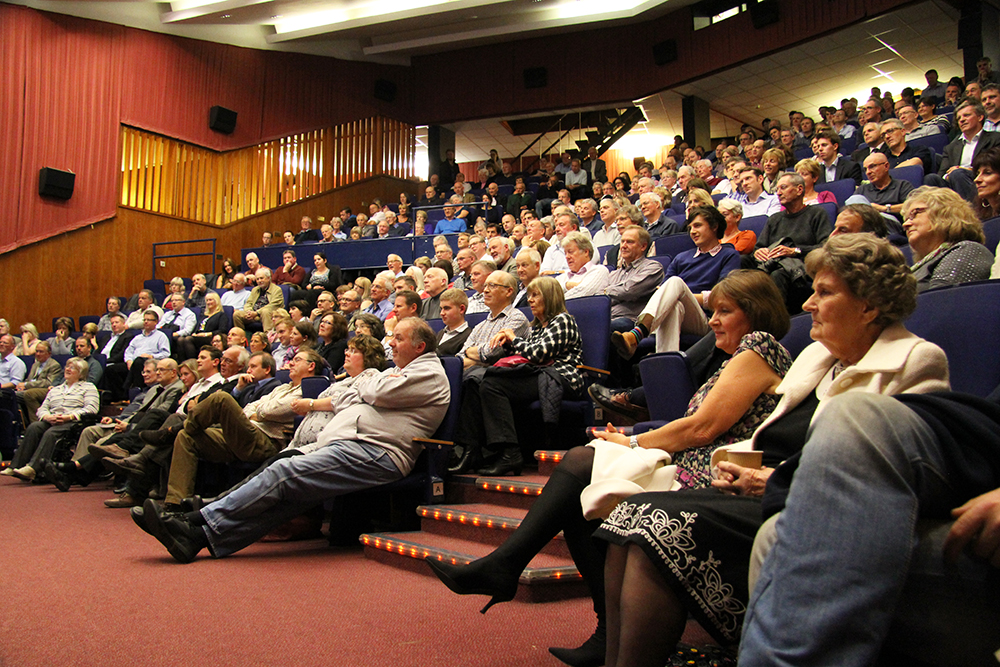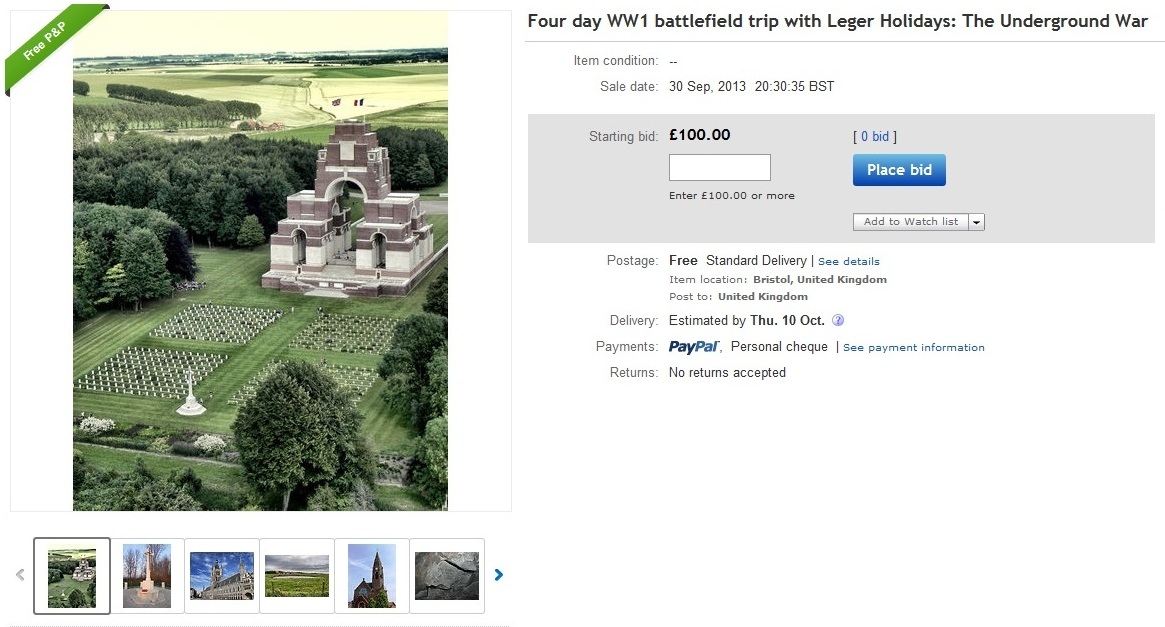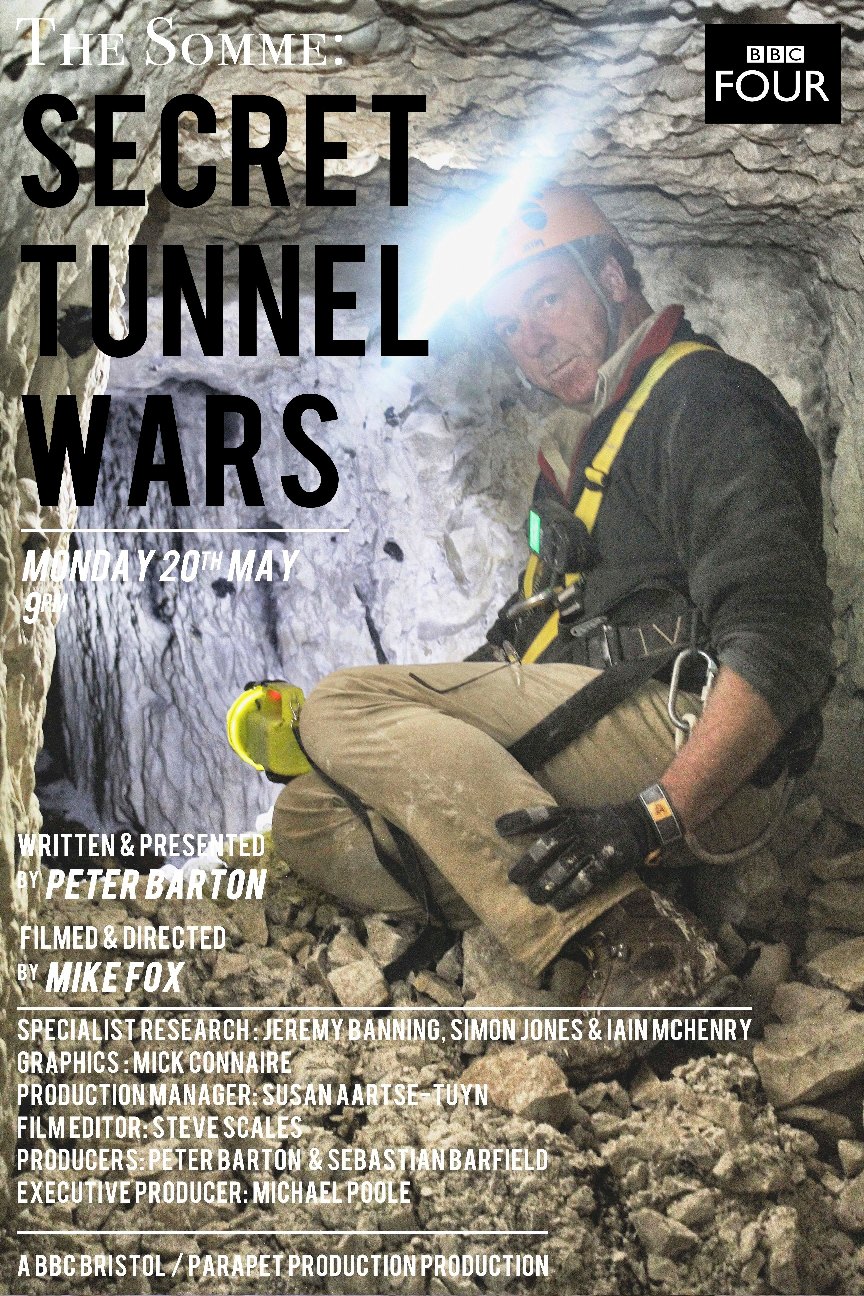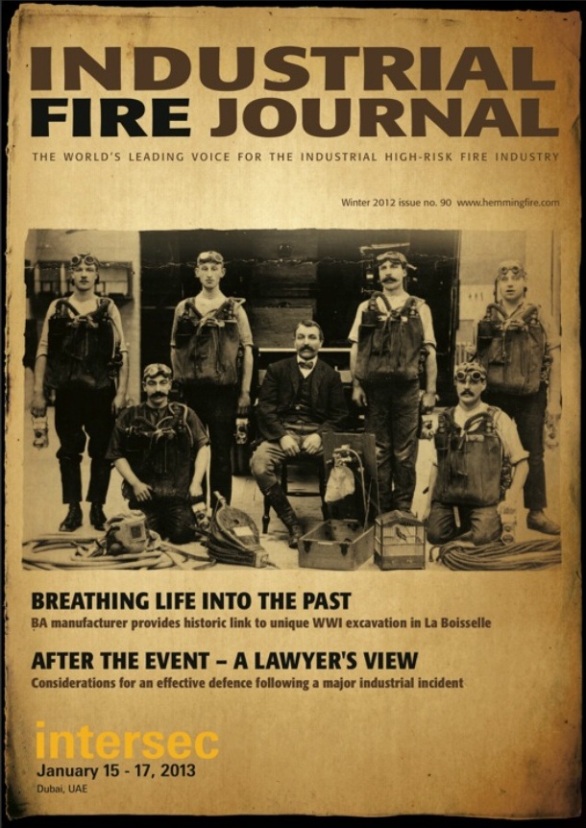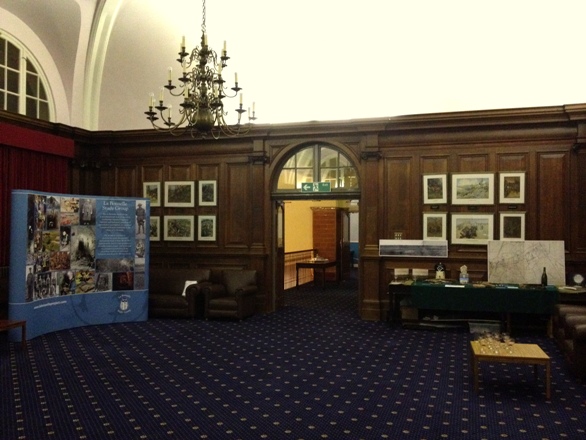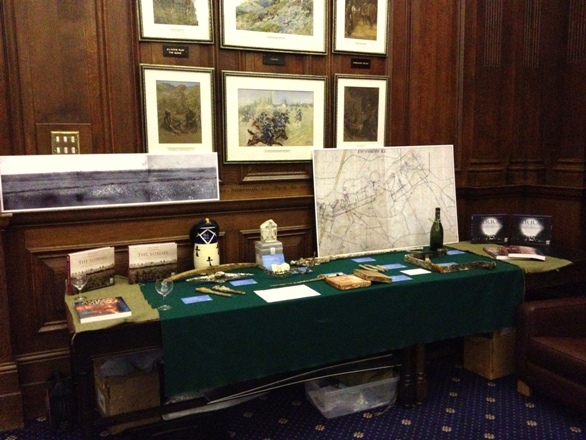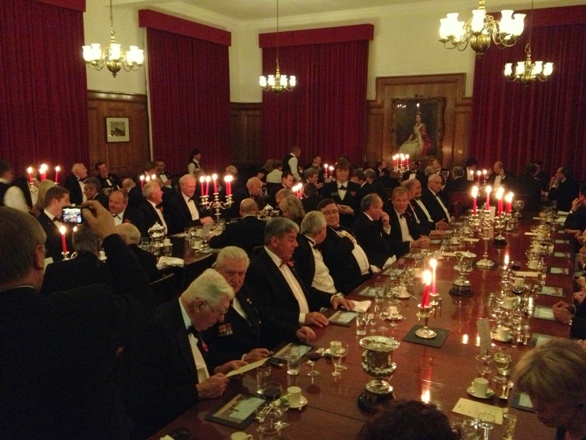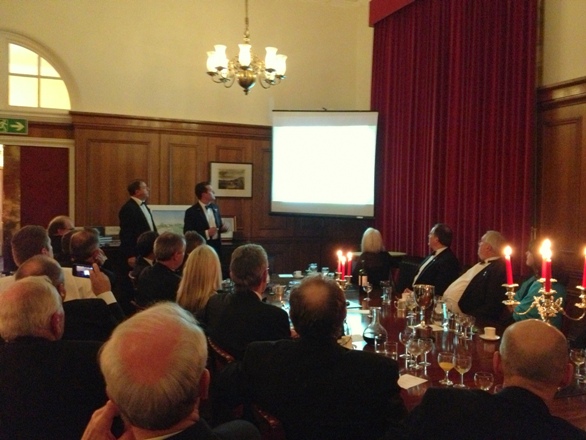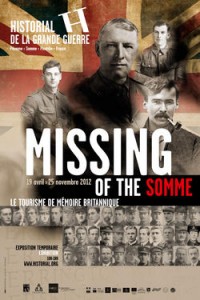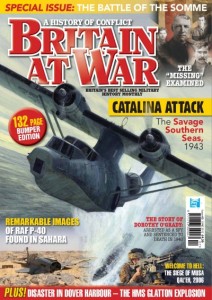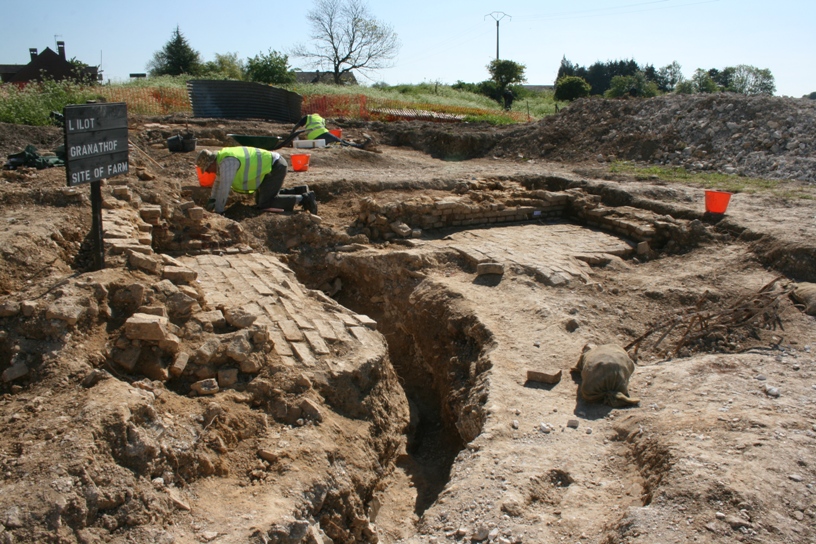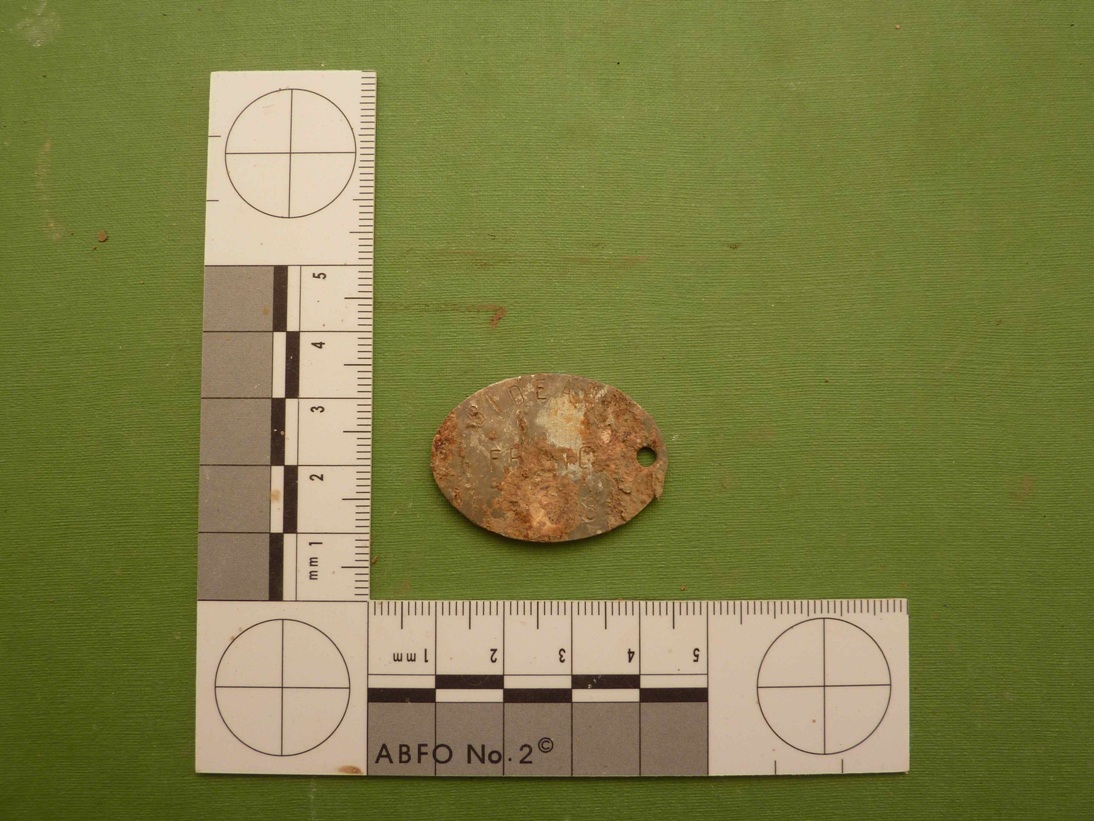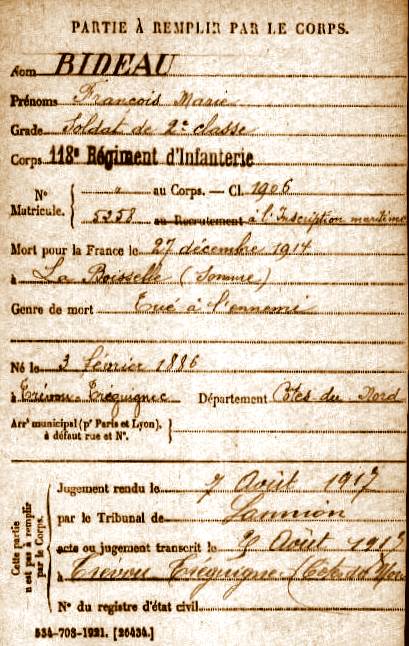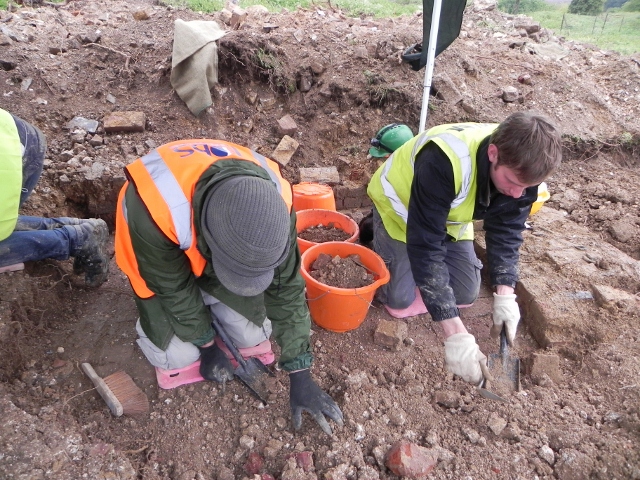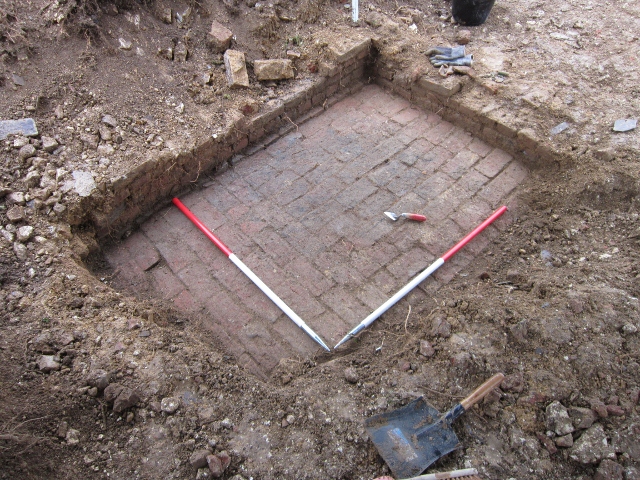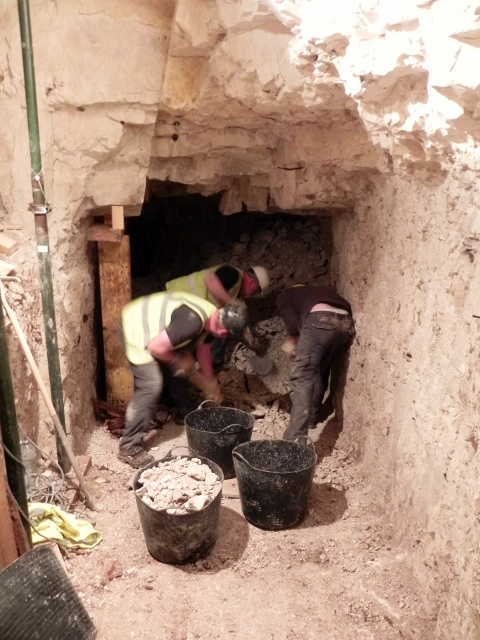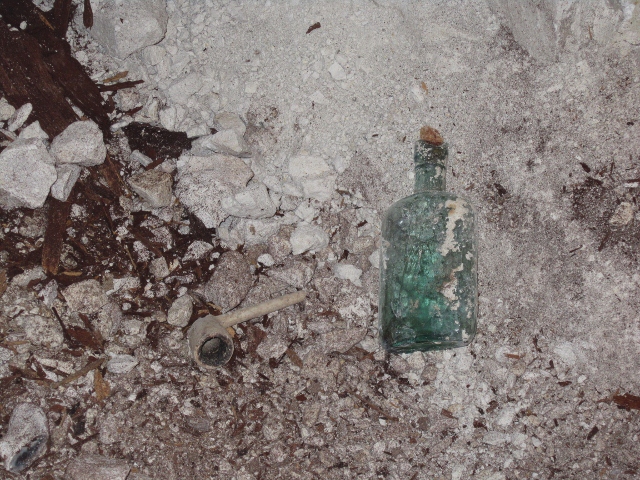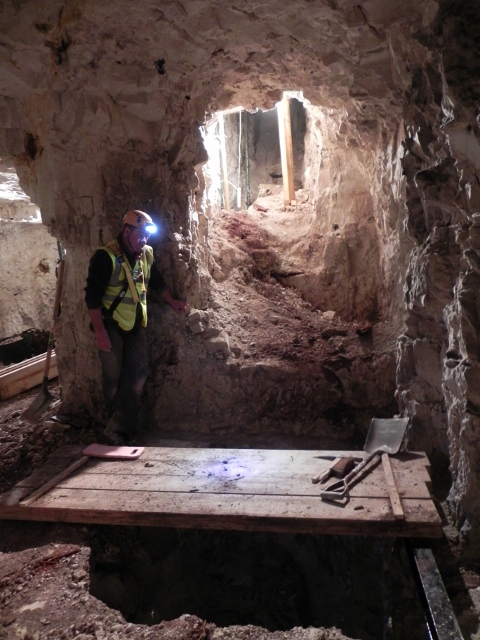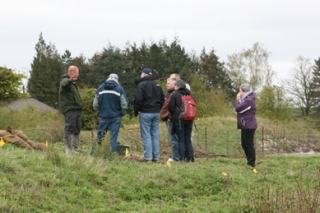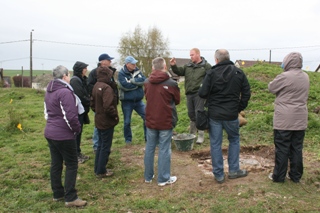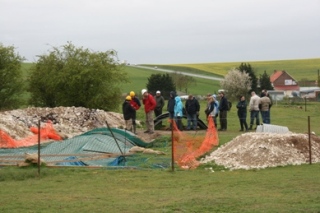As some followers of the La Boisselle Study Group (LBSG) will be aware, in the autumn of 2013 a new local organisation was formed in order to consider the future potential of the ŌĆśGlory HoleŌĆÖ archaeological site at La Boisselle, Somme. It was named the Association des amis de lŌĆÖIl├┤t de La Boisselle (hereafter Il├┤t Association). It was also decided that future contracts were to be agreed between the LBSG and the Il├┤t Association, rather than solely with the proprietors as before. This was seen as a wise and useful development. The President of the Il├┤t Association is the proprietor of the Glory Hole, Mme. Claudie Llewellyn-Lejeune.
In late April the LBSG received a new draft contract from Mme. Llewellyn-Lejeune in her role as President of the Il├┤t Association. It has been unanimously rejected for the following two key reasons:
1. As every visitor to the Glory Hole will be aware, the LBSG invested careful thought and enormous effort in ensuring maximum site safety for all. This feature of practical archaeological and engineering work has always remained at the top on our list of priorities, and our safety procedures evolved and became more stringent as the project progressed, for reasons that will become clear. In the new contract there are no clauses that deal with the behaviour of one individual associated with Mme. Llewellyn-Lejeune who was not a member of LBSG , whose erratic and dangerous activities have for some time caused problems for the LBSG and the project as whole.
Of the many thousands of people who have visited the Glory Hole during the last three years, and despite attending a specially arranged and comprehensive ordnance awareness lecture by world expert Brian Todd of Bactec International,┬Ā this individual is the only person who has repeatedly ŌĆō and knowingly ŌĆō put human life at risk. He has frequently wilfully ignored clear and essential safety regulations, and on many occasions has been present on site whilst under the influence of alcohol; the LBSG have received numerous comments from colleagues and visitors about his behaviour. After each event, the LBSG challenged him about his potentially lethal activities, which on at least two occasions included the throwing of live hand-grenades towards or to volunteers. Despite discussion, however, this individualŌĆÖs behaviour did not change. During the past two years further examples have been brought to our attention by other parties. All events that took place at the Glory Hole are documented.
In the autumn of 2012, Mme. Llewellyn-Lejeune was made fully aware of the serious danger that this individual posed, and of the many messages of concern received from visitors. Having, to our surprise, initially defended him, she then stated categorically that he would never again come on site when the LBSG were working there; unfortunately, that assurance has not been adhered to.
It is impossible to ensure the safety of any person working at or visiting the Glory Hole if the individual is present. Given that the LBSG will not be returning to work at the site, we are no longer able to personally police his activities. The French authorities (including the Picardy archaeological organisation, the DRAC) have been made aware of the situation.
We understand that villagers have been led to believe that work has ceased because it had become too dangerous. The LBSG would like to state that this is entirely untrue. Having received expert training and been sponsored with specialist equipment, and implemented the strictest of health & safety procedures, the Group at no time had any concerns about subterranean work. In three years of exploration there were no emergencies or alarms. By far our greatest concern was┬Ā the erratic and dangerous behaviour of the individual referred to above, and his wilful disregard of unambiguous and critical safety regulations to which everyone else on site studiously adhered.
2. The second key reason the LBSG is unable enter into an agreement is because for some time the proprietor/president of the Il├┤t Association has publicly and repeatedly been making false, defamatory and injurious comments relating to members of the LBSG; some have appeared in the regional newspaper, the Courier Picard. Defamatory e-mails and letters have also been sent to French historians, archaeologists and other interest groups, societies and historical associations, and also individuals. It soon became clear that some messages had been re-circulated via mailing lists and other forms of social media. The identities of some of the recipients are known. The nature of the accusations made in these communications are as follows:
- The LBSG are profiteering from the project.
- The team is of solely British composition.
- The French or German history of the site is regarded by the LBSG to be of minor importance.
- The LBSG is only concerned with exploring British trenches and finding the remains of British soldiers; the remains of any French soldiers that are uncovered are being summarily dispensed with.
- Heavy machinery is being employed to cut archaeological corners, and professional archaeological techniques are being deliberately ignored, not only by the LBSG but by the French archaeological authorities, who are ŌĆ£looking the other wayŌĆØ.
- Archaeology and landscape features are being deliberately and wantonly destroyed.
- In November 2013, the LBSG deliberately impeded the proprietor from visiting her own property.
- The LBSG have been stealing artefacts from the site.
- Artefacts from the site have been taken (i.e. stolen), and transported to the UK in the helicopter of one of our sponsors.
The defamation applies personally to members of the LBSG and their professional volunteer colleagues, but also libels the DRAC Picardie, who not only oversee the La Boisselle Project but frequently work alongside our archaeologists. Some LBSG sponsors have also been implicated; they have all been advised of the situation. Despite repeated requests to Mme. Llewellyn-Lejeune to supply corroborating evidence for her accusations, none has been provided.
For the benefit of the many thousands of people across the world who follow and support the La Boisselle Project, we are reproducing below an example of this defamation, a message sent on 26 November 2013 by M. Ren├® Richard, President of the Breton 14-18 Association, to his colleagues:
Claudie Llewellyn m’a fait passer cette photo prise clandestinement sur le site de la Boisselle dont elle est propri├®taire. L’├®quipe uniquement britannique de l’arch├®ologue Peter Barton, au m├®pris des r├©gles du contrat d’intervention sur ce site priv├® et pr├®serv├®, m├©ne des fouilles ├Ā grands coups de pelleteuse (mais oui !), ceci avec l’accord de la DRAC Picardie. On a connu la DRAC plus soucieuse de pr├®servation de patrimoine. Sur les ch├óteaux, truelles, cuill├©res et pelles sont juste tol├®r├®es. Ici, carr├®ment une pelleteuse pour aller vite. Le site magnifique que le groupe Bretagne 14-18 avait visit├® en mai est d├®figur├®, le premier entonnoir est ├®ventr├®. Ce que veulent les Anglais (qui interdissent ├Ā Claudie, propri├®taire des lieux, de venir constater ce qu’ils font, et qui tol├©rent tout juste qu’elle entre sur son terrain ; Peter Barton ne lui adresse plus la parole) veulent manifestement trouver au plus vite des squelettes de tunneliers anglais. Le reste, comme la pr├®servation du site, est secondaire ou m├¬me sans importance. Ils saccagent sans vergogne, tol├®r├®s par la DRAC, sous le regard incr├®dule et impuissant de Claudie et de quelques amis. Tout ├¦a sera film├® et fera un beau reportage ├Ā la BBC en 2014. S’ils trouvent des soldats fran├¦ais (car ils furent nombreux ├Ā dispara├«tre dans ce charnier que fut cet ├«lot), tant pis pour eux. Il faut sans nul doute des ossements anglais. ET, pendant ce temps, les autorit├®s fran├¦aises, locales, d├®partementales ou r├®gionales regardent ailleurs. Navrant. J’en reparle dans le bulletin.
Summary: This message claims that the LBSG are using mechanical diggers to speed up the archaeological process and that the preservation of the site is of secondary importance. It claims that this was done in order to reach the remains of English soldiers more quickly, and that if French remains are found then it is simply ŌĆśtoo bad for themŌĆÖ. It claims that our work is focussed solely on the recovery of English ŌĆśtunnellersŌĆÖ and will be filmed for a BBC documentary in 2014. Everything other than this desire, it is noted, is of lesser or even no importance: archaeological corners are being cut. The message suggests that the DRAC Picardie are complicit in this and that French departmental and regional authorities have no interest and avert their eyes. Every aspect of this email ŌĆō circulated widely ŌĆō is incorrect and defamatory. M. Ren├® Richard did not visit the site during this period, and has never made himself known to the LBSG team. We categorically refute these deeply damaging allegations.
The LBSG have also been advised that certain regional directors of the DRAC have received malevolent communications from Mme. Llewellyn-Lejeune. During the last working period in December 2013, M. Tahar Ben Redjeb of the DRAC Picardie spoke personally (on site) to her, making it plain that she was libelling his organisation, and quoting passages as examples. Mme Llewellyn-Lejeune denied this, and the defamations have continued. Other authorities to receive similar communications include the CWGC and their French counterpart, the ONAC.
There have, therefore, for some time been repeated attempts by Mme. Llewellyn-Lejeune to damage the personal and professional reputations of a wide range of personnel involved in the excavations. The LBSG have received no apologies for this behaviour, and there is no indication that any of Mme. Llewellyn-LejeuneŌĆÖs accusations will be retracted or rescinded. After each defamatory episode, the LBSG responded privately but in full to all members of the Il├┤t Association.
Additional points
Length of contract
The new contract was offered for a period of one year. This was an insufficient period for the LBSG, for the professionals who work with the Group, for our very many volunteers, and for our sponsors. It allows no flexibility in planning or fundraising. In the autumn of 2013 the LBSG cautioned Mme. Llewellyn-Lejeune that to prepare the site for the centenary commemoration of French and German actions at the Glory Hole in 1914, a new contract needed to be drawn up and agreed very soon, and that to be feasible it needed to be of a duration of at least three years, encompassing 2015 and 2016, each of which would require commemorations tailored to the archaeology and events.
In November of 2013 the LBSG were informed that a new contract had been drafted. It was not however delivered until late April 2014. In the intervening period Mme. Llewellyn-LejeuneŌĆÖs defamatory activities continued, so the arrival of the new contract came as something of a surprise. It was discussed by members, and in late May universally rejected. The LBSG has heard nothing from the Il├┤t Association since.
Given the enormous amount of time and effort required in the reporting, planning, application and fundraising process ŌĆō and to honour our own heavy personal work commitments at this very busy time ŌĆō it was in any case too late to do anything before the spring of 2015.
Artefacts
All items recovered as a result of archaeology have remained the property and the responsibility of the proprietor. Many artefacts are currently lodged in the Mus├®e Somme at Albert. Those that were displayed in the recent exhibition at the International Festival of Archaeological Films at the Gaumont cinema in Amiens were noted by LBSG members, the DRAC and the CIRAS as being in a serious state of degradation; it is essential that the Il├┤t Association make immediate efforts to properly conserve these and other unique items.
Protection of archaeology
As noted in our News update of 7 April 2014, in December 2013 the trenches and other vestiges were covered and the site completely backfilled. This standard archaeological practice was undertaken in order to protect the archaeology from both the climate and unauthorised visitors (vandalism/treasure hunting became a serious and costly problem for the LBSG last summer), and to make the site entirely safe. All LBSG property, such as tools and safety equipment, has been removed and put into storage elsewhere.
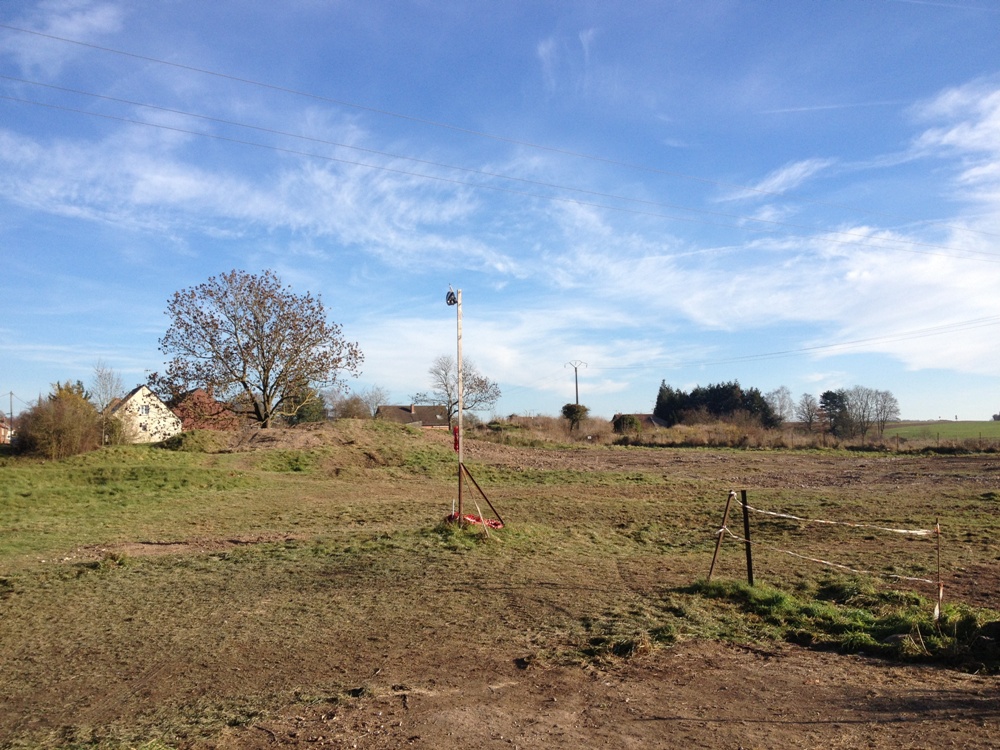
Photograph of site taken on 9 December 2013 showing archaeological workings backfilled
A note of gratitude
We wish all interested parties to know that we have been very grateful for your generous support since 2011, and it is with the most profound regret that we leave our unique work at the Glory Hole; there remains much more to learn ŌĆō and much more to share.
The LBSG are, however, delighted that their collective efforts have been instrumental in helping to save the site from development and for posterity: the Glory Hole is now firmly embedded in public consciousness, not just in France and the UK, but worldwide.
There is a greater understanding of its importance by the Conseil G├®n├®ral, local politicians, the DRAC, the CIRAS, UNESCO, the tourism authorities, museums, and countless local people.
Our supporters across the world have played a large part in this achievement. We also owe a huge debt of gratitude to the French archaeological and cultural authorities (the DRAC and the CIRAS) for their confidence, support and assistance with funding. We thank the Service D├®minage for their confidence, and for their unfailing skills and advice, and the ONAC for investing responsibility in our specialists to recover the remains of French and German soldiers. We would also like to thank the Commonwealth War Graves Commission for working with our specialists to recover the remains of British soldiers.
We are pleased that, having previously been engaged in selling off, plot-by-plot, sections of the Glory Hole for housing development, the Lejeune family are now fully aware of the historical and symbolic importance of the site, and will work with the Il├┤t Association and others to ensure its long-term future and protection. We wish them the best of good fortune.
We are especially gratified that as a result of the work the LBSG has carried out during the last three years, the threat of larger-scale development by compulsory purchase order has been lifted.
With a view to future publications, international archival research into the history of the Glory Hole and La Boisselle will continue. Other archaeological projects are being considered for the centenary period.
